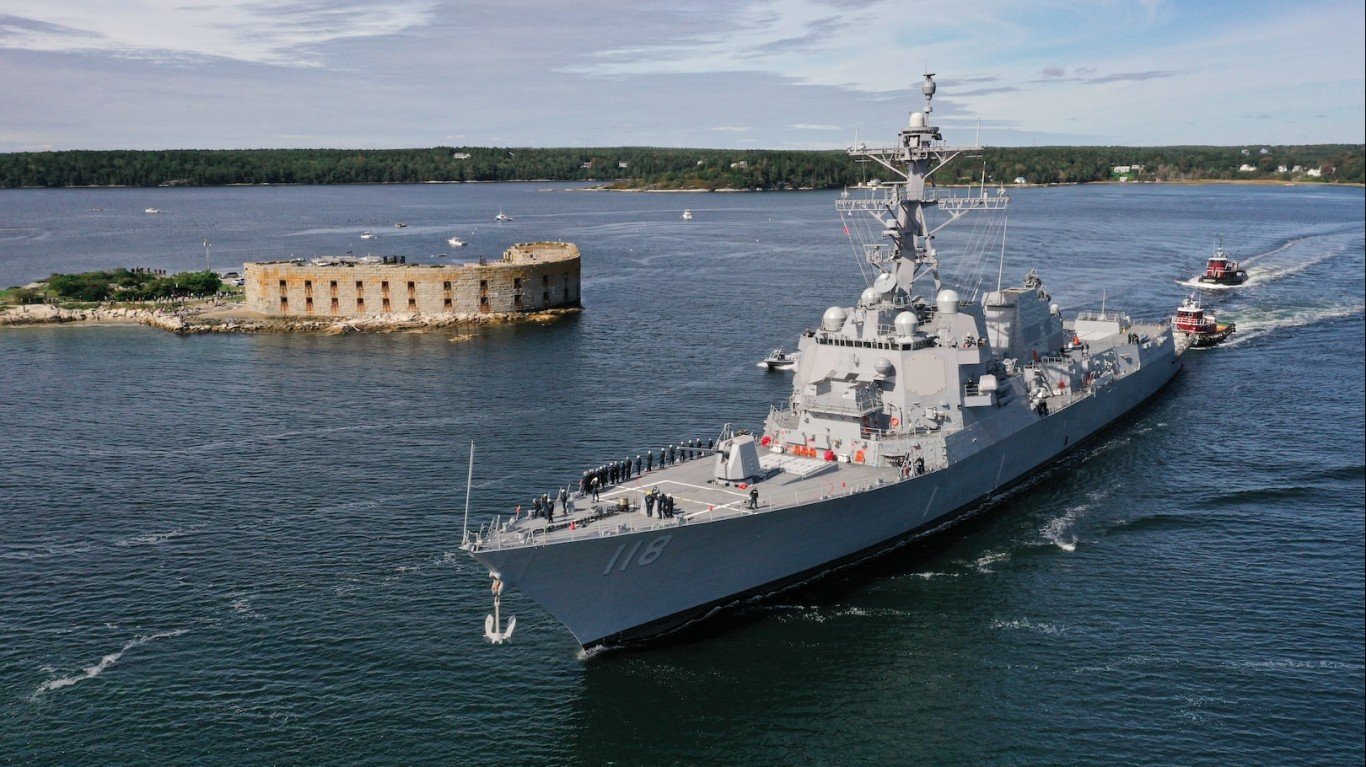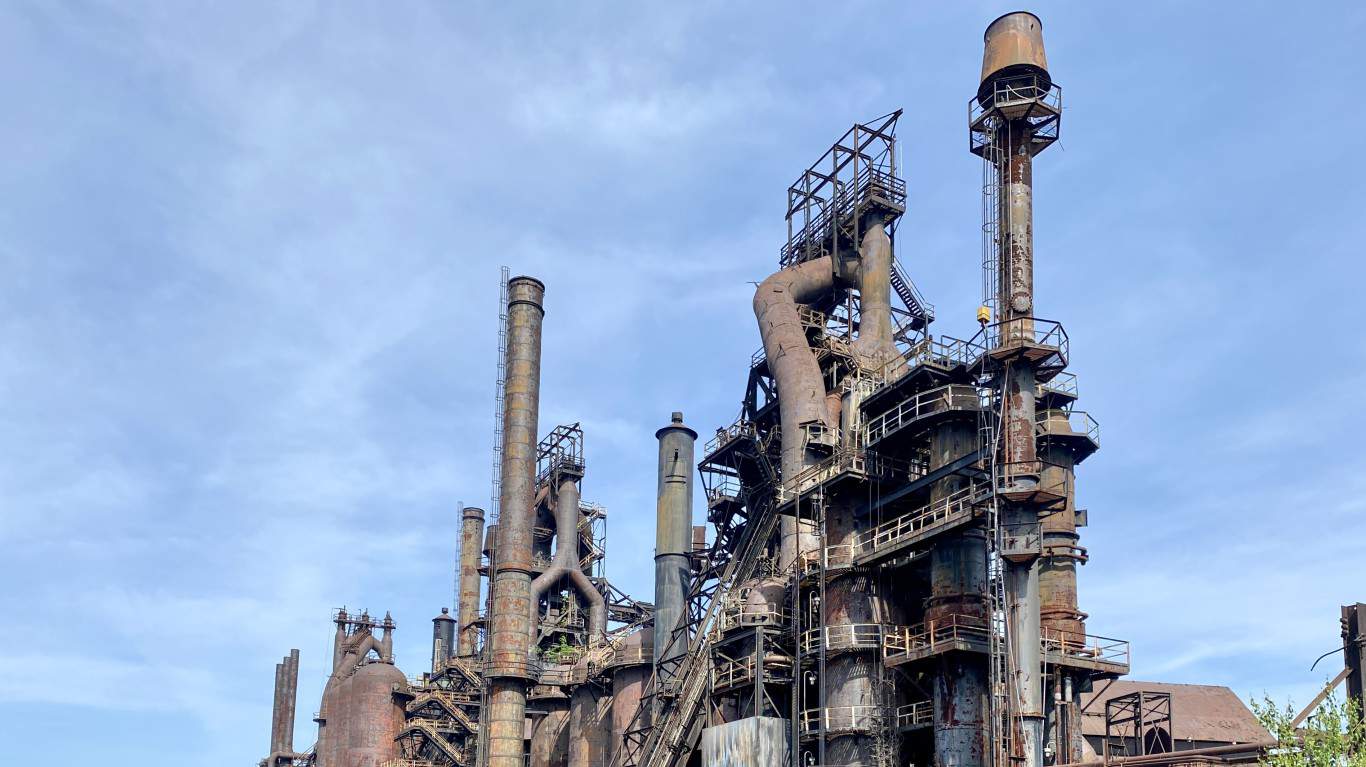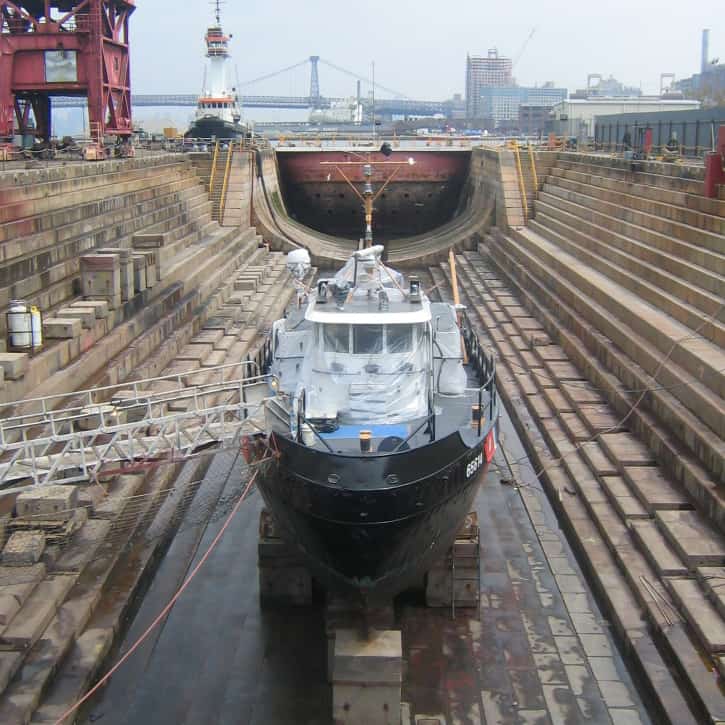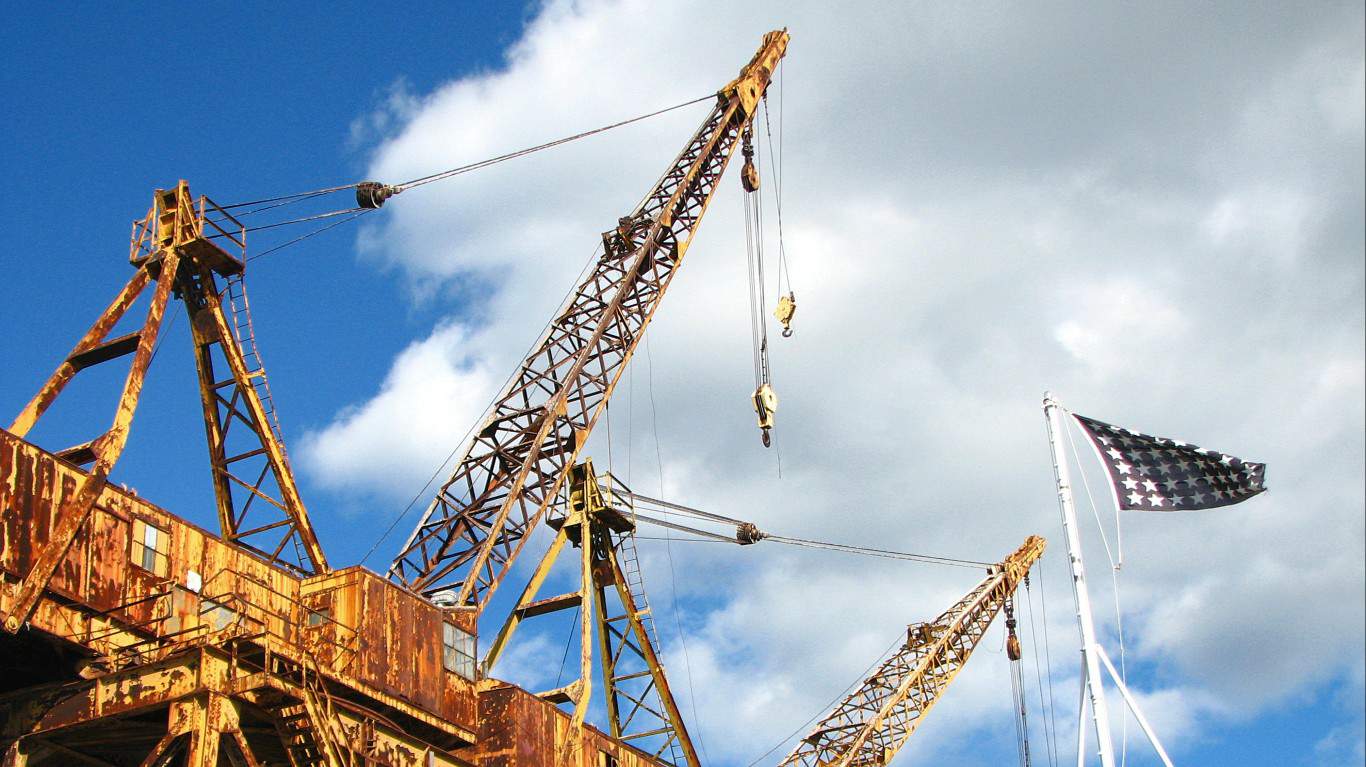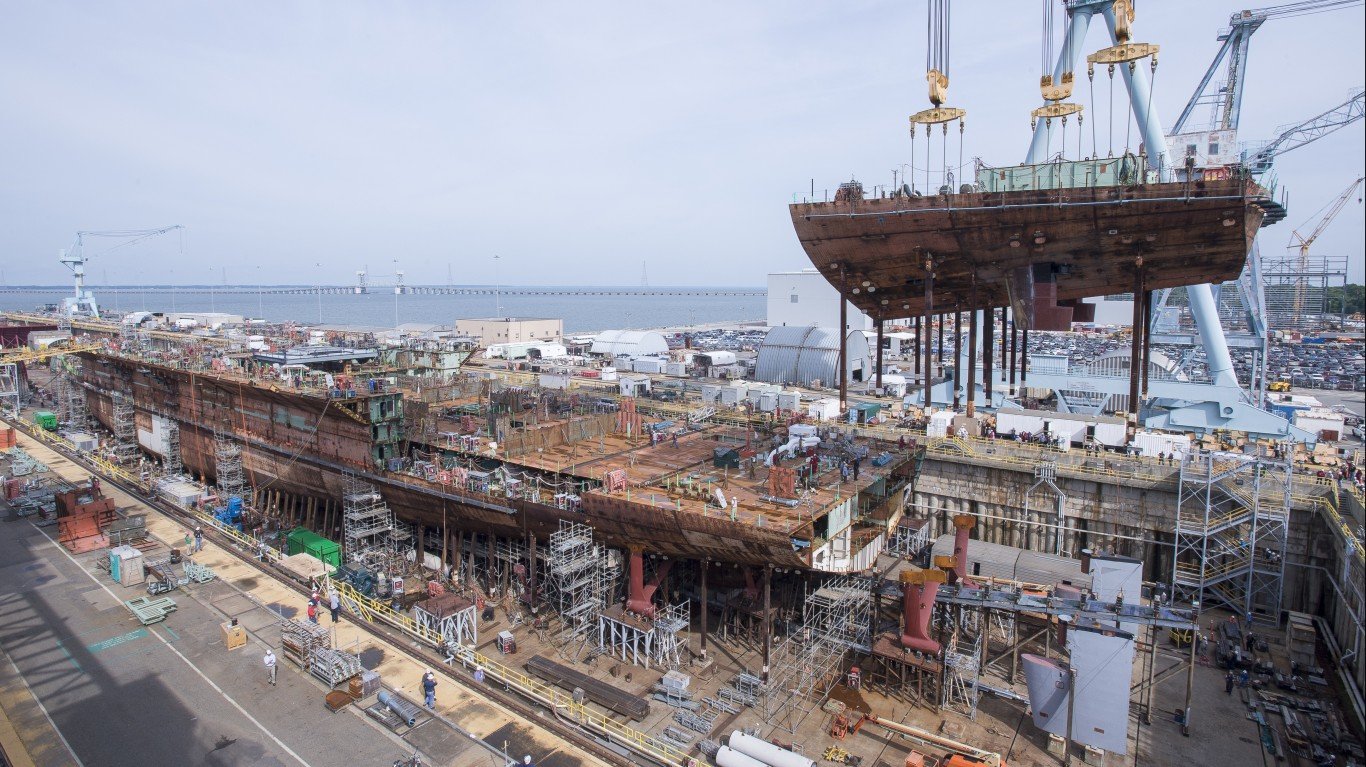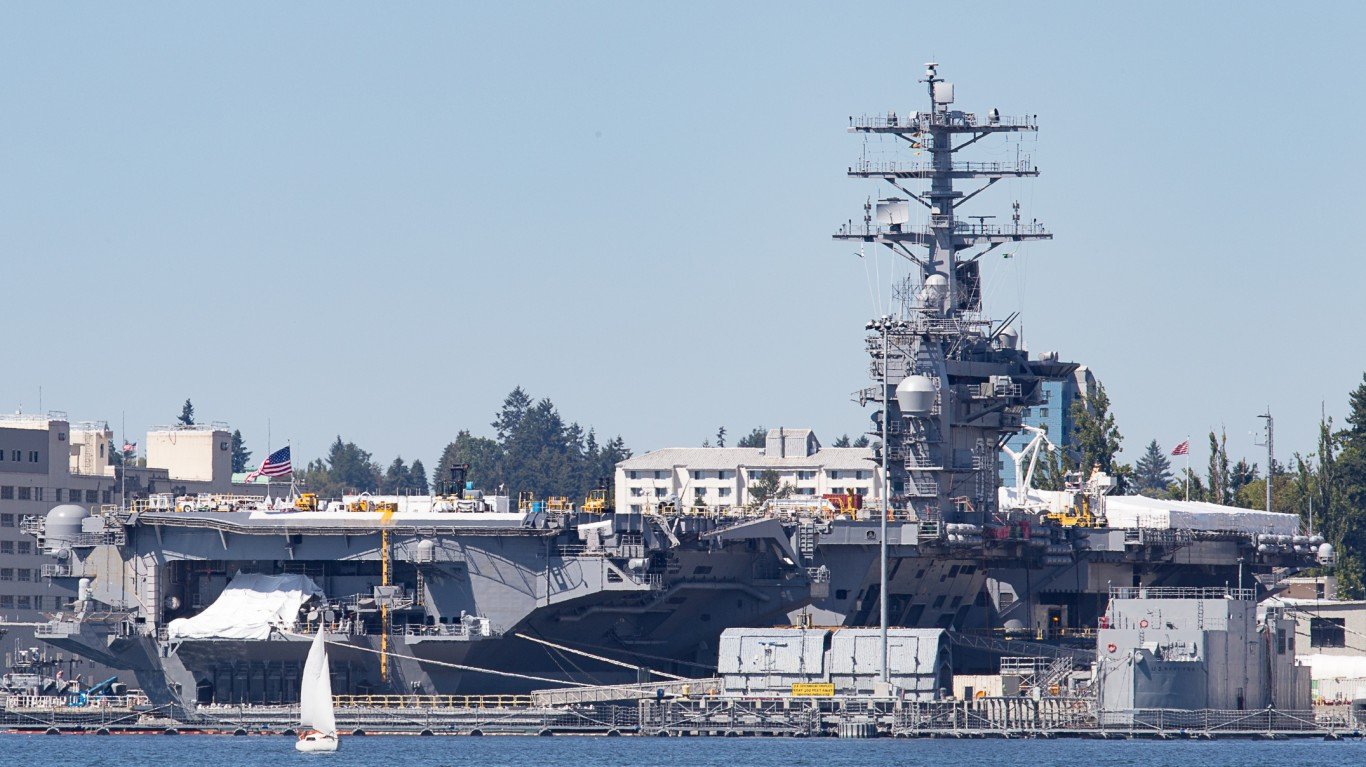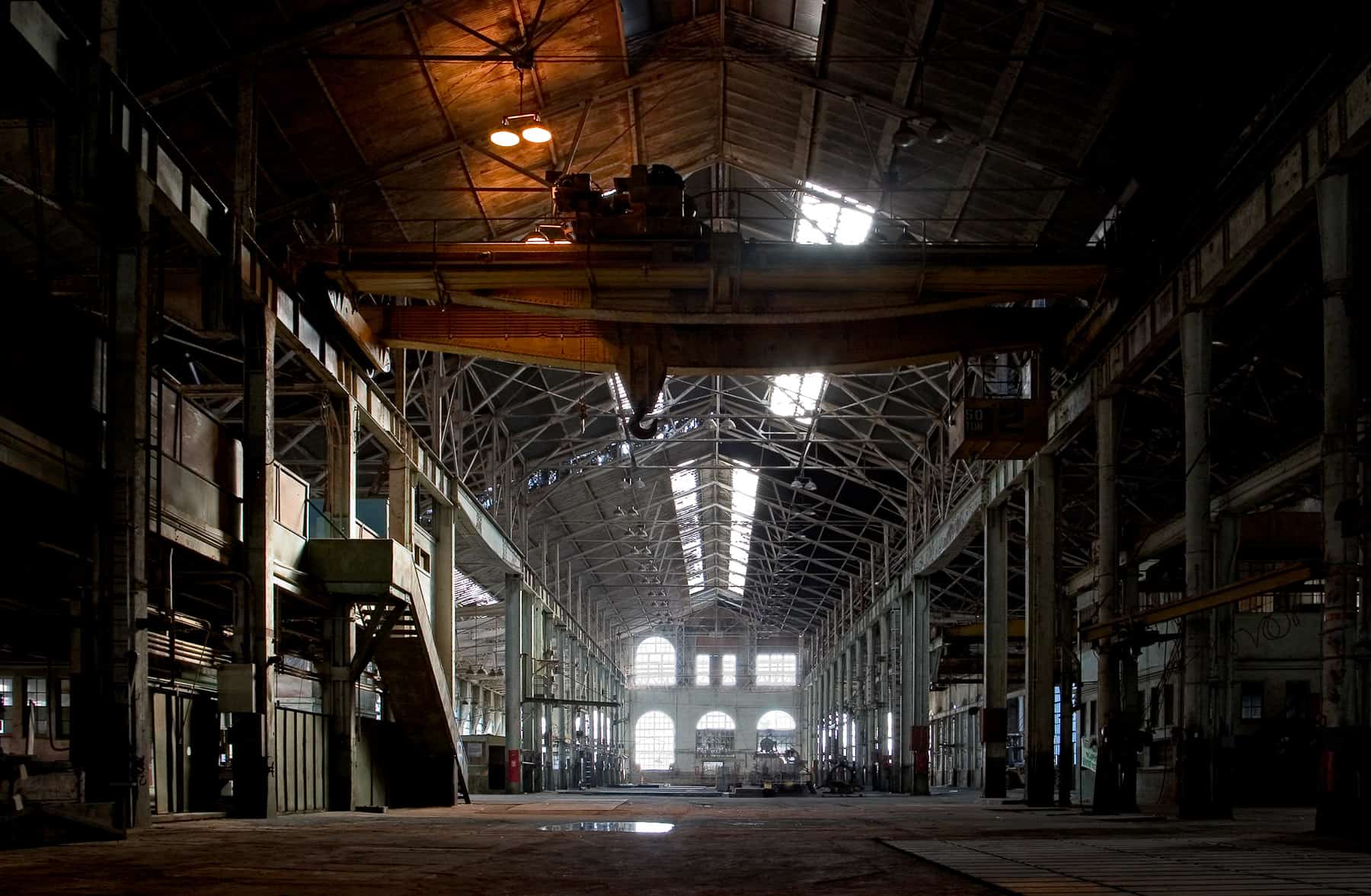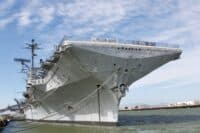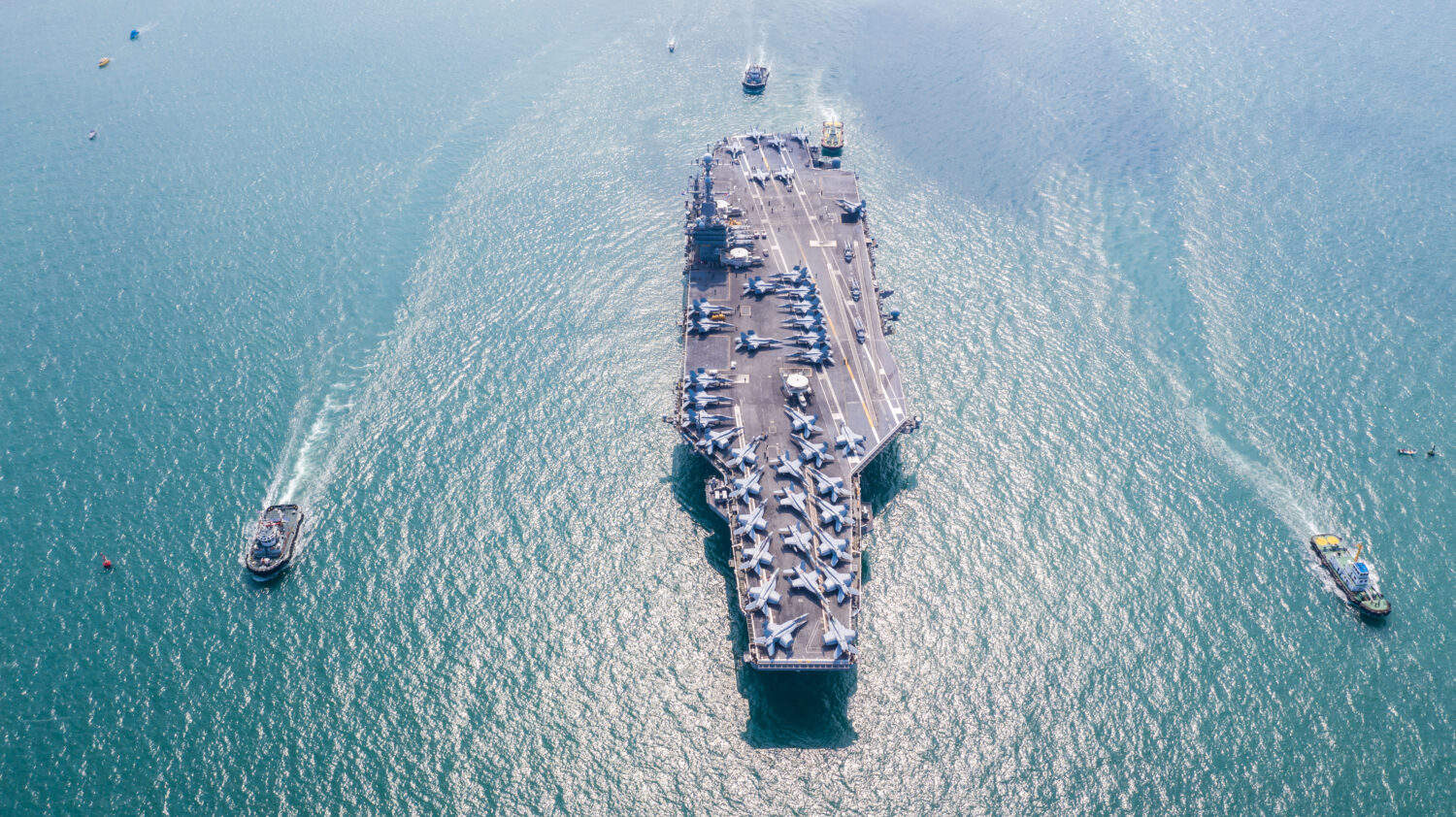

This June marks 212 years since the beginning of the War of 1812. From June 18, 1812, to February 18, 1815, the United States, a young nation with a small navy at the time, took on the greatest naval power in the world, Great Britain. According to the Naval History and Heritage Command, the U.S. had launched a large-scale shipbuilding program before the war. Despite this, Britain had a major advantage in the war over the U.S. in terms of the number of ships and sailors. Things have changed over the years and today, the U.S. Navy is no longer the underdog but is known as the largest and most powerful naval force in the world.
Since the American Revolution, many battles have been fought at sea. Military shipbuilding has been a critical component of the nation’s defense since the beginning. Amazingly, there are even some shipyards from the 1700s that still exist today. The U.S. Navy relies on several prominent companies to supply it with vessels, although this number has been consolidated over the years. (These are the 19 classes of warships and submarines of the U.S. Navy fleet.)
24/7 Wall St. compiled a list of the most iconic American ship and submarine manufacturers throughout history and ranked them alphabetically. The list was created by a careful review of the catalog of shipbuilders from Military Factory, an online database of arms, vehicles, and aircraft used by militaries worldwide.
One of the biggest companies on this list is Huntington Ingalls, which via its shipyard Newport News built the Gerald R. Ford and every Nimitz-class aircraft carrier. Although Newport News is today a subsidiary of Huntington Ingalls, it has produced many vessels for the U.S. Navy since its founding in the 19th century. Newport News is currently one of two outfits that the U.S. Navy uses to build its nuclear submarines.
For instance, the USS Virginia (SSN-774) is a nuclear-powered attack submarine that has recently entered service. Introduced in 2004, the Virginia-class is outfitted with a General Electric S9G nuclear reactor, which allows it practically limitless range and a top speed of 40 mph. These subs are armed with a vertical launch system for BGM-109 Tomahawk cruise missiles as well as Mk-49 torpedoes for naval engagements. (These are the ships being built right now for the U.S. Navy.)
Huntington Ingalls is just one example of the many companies that have helped the Navy fill its fleet of ships.
Here are the most iconic American ship and submarine manufacturers.
Why We’re Covering This
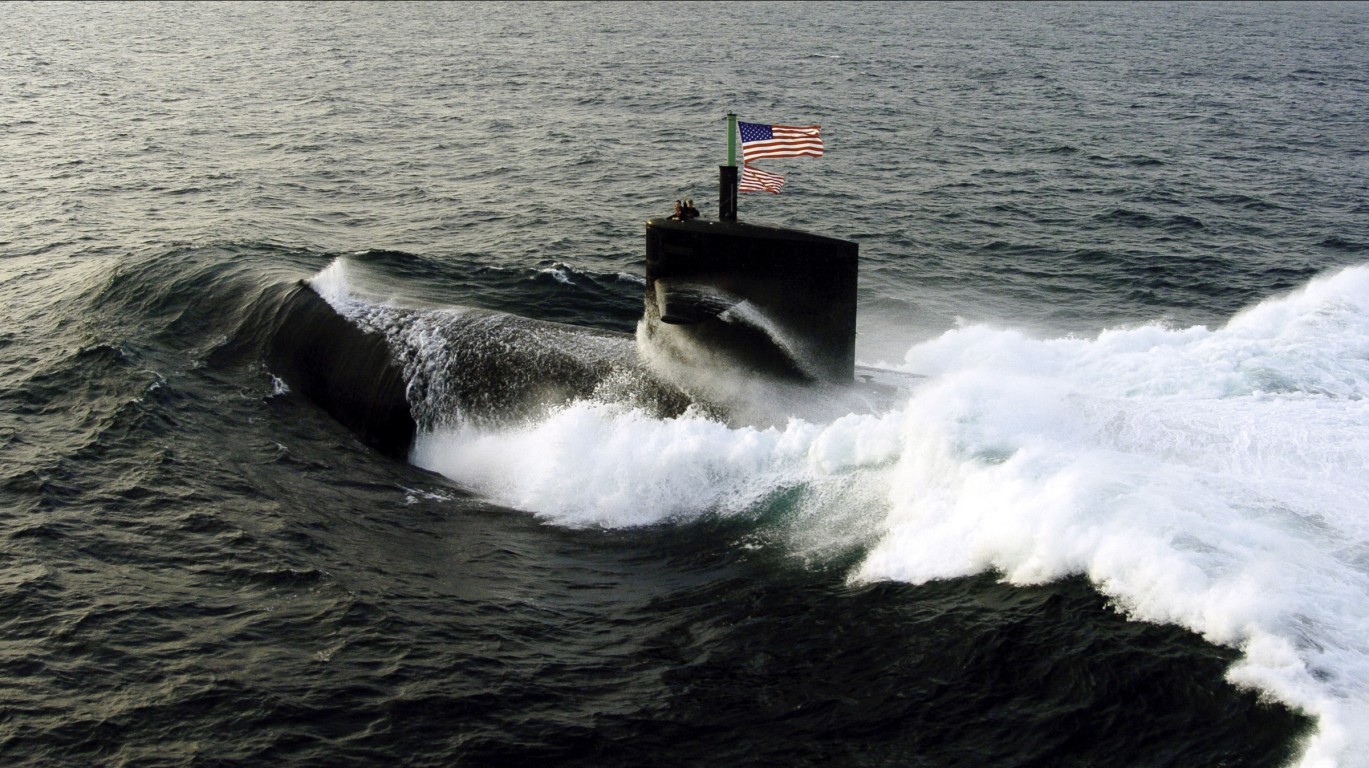
The United States is surrounded by the Atlantic and Pacific Oceans. Although it’s ideally located for overseas trade, that trade can be threatened by hostile forces. America may have begun as a nation with a small navy, but over time, the U.S. has built the world’s strongest naval fleet. Thanks to the legendary shipbuilders of the past and today, the country is in an excellent position to defend itself by sea.
Austal USA
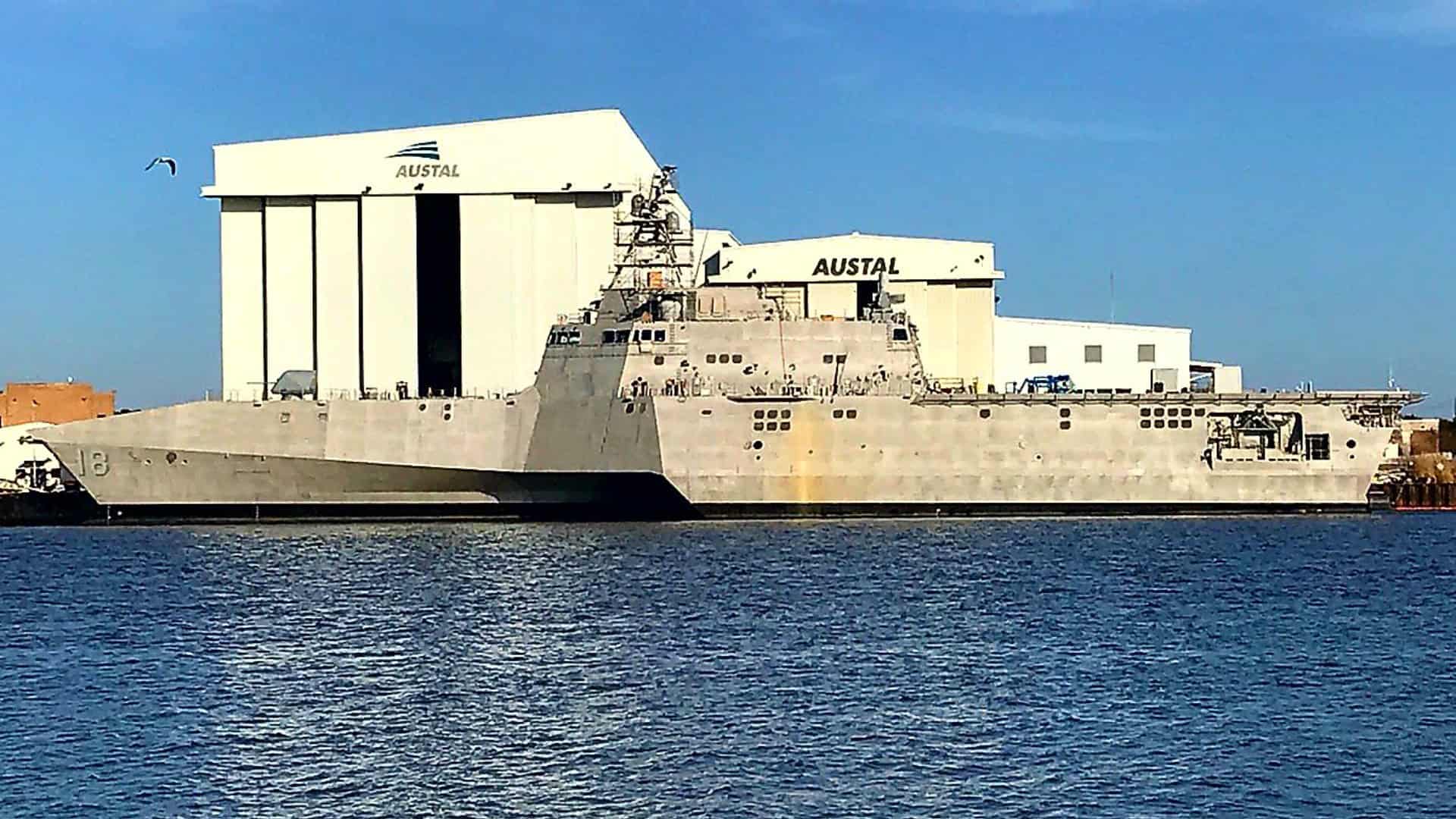
- Year founded: 1999
- Notable ships: USS Gabrielle Giffords (LCS-10), USS Coronado (LCS-4), USS Independence (LCS-2)
Austal USA Continued
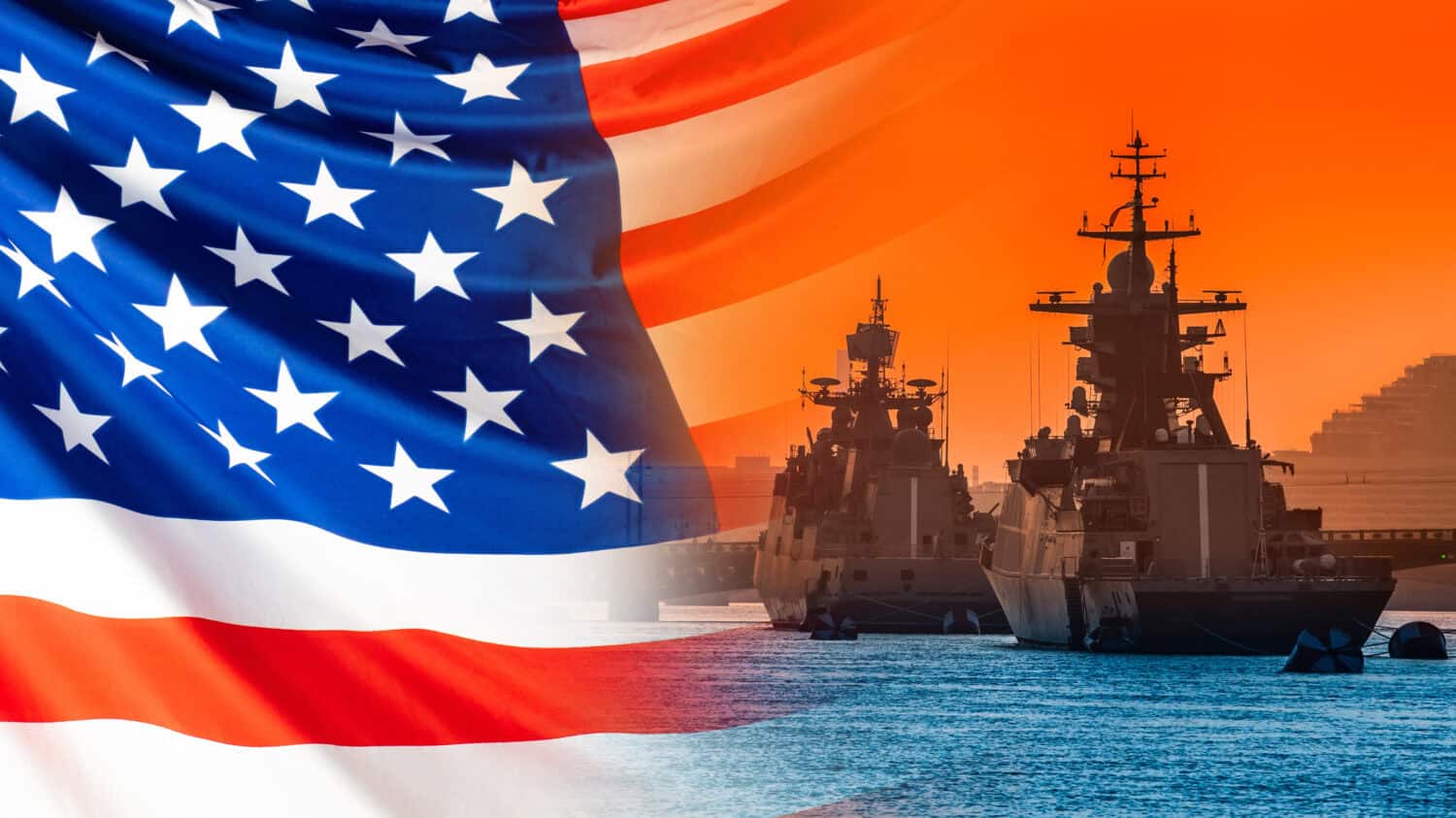
Austal USA came to be as a subsidiary of an Australian shipbuilding company in 1999, and it quickly won the U.S. Navy’s contract for the Independence-class of littoral combat ships in 2005. The company also has contracts with the U.S. Coast Guard for its Heritage-class cutter.
Bath Iron Works
- Year founded: 1884
- Notable ships: USS Zumwalt (DDG-1000), USS Arleigh Burke (DDG-51), USS Gettysburg (CG-64)
Bath Iron Works Continued
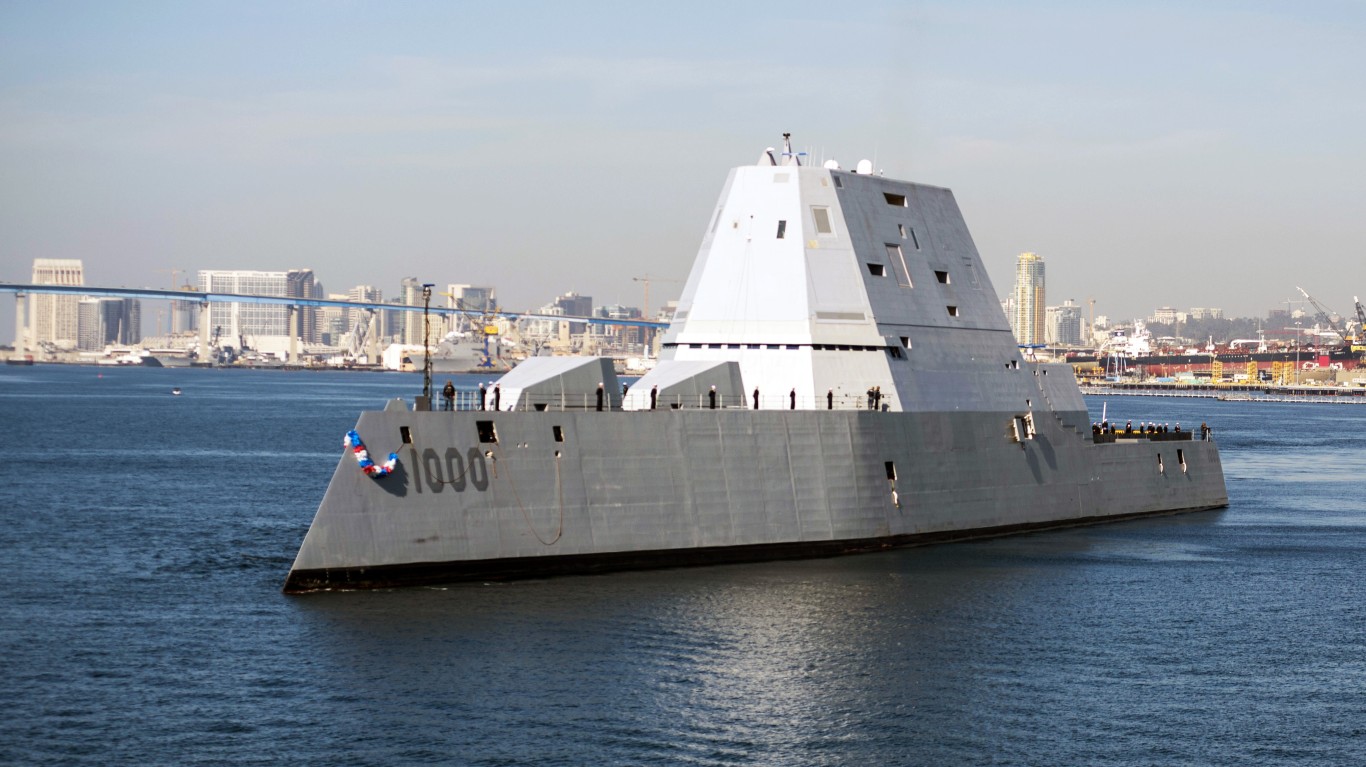
Bath Iron Works was founded in 1884, but today it operates under the umbrella of General Dynamics. This company has primarily built destroyers and cruisers for the U.S. Navy with the most recent classes being the Ticonderoga, Zumwalt, and Arleigh Burke.
Bethlehem Steel Company
- Year founded: 1899
- Notable ships: USS Saint Paul (CA-73), USS Des Moines (CA-134), USS Toledo (CA-133)
Bethlehem Steel Company Continued
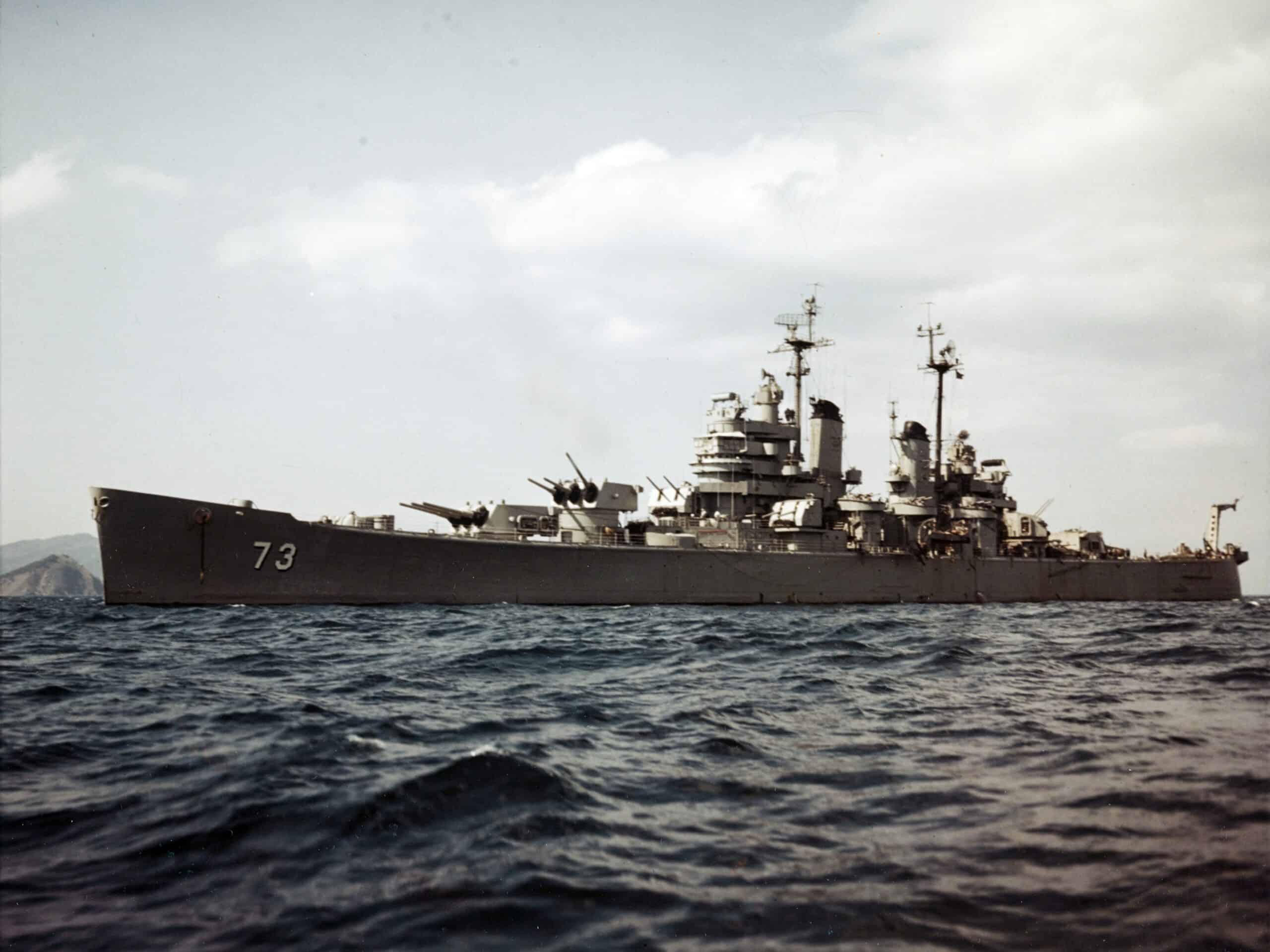
Founded in 1899, Bethlehem Steel grew to become one of the biggest shipbuilding operations in the United States. It purchased Fore River Shipyard in 1913 and would go on to produce numerous ships under that subsidiary. However, the company would ultimately close in 2003.
Brooklyn Navy Yard
- Year founded: 1801
- Notable ships: USS Missouri (BB-63), USS Connecticut (BB-18), USS Iowa (BB-61)
Brooklyn Naval Yard Continued
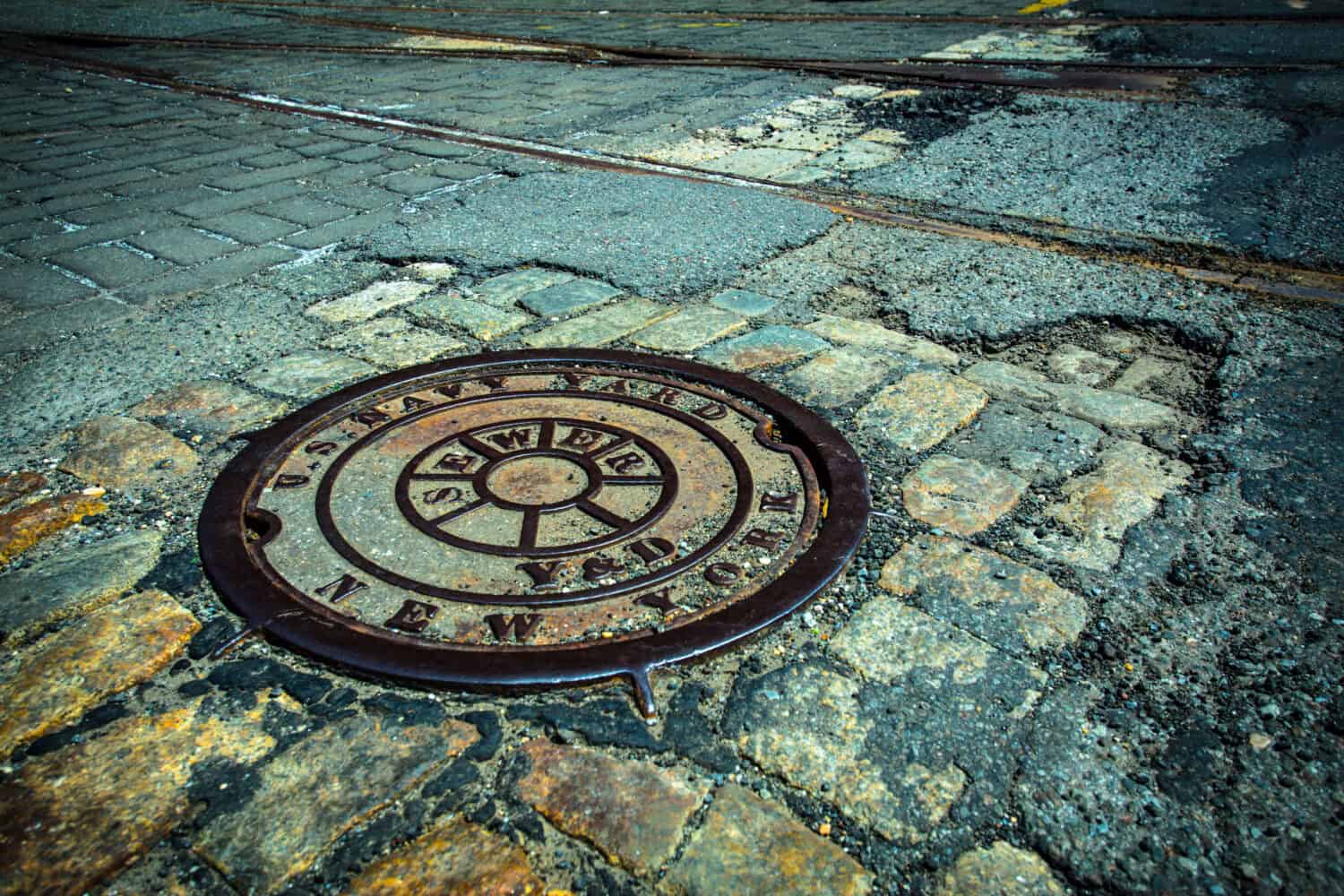
The Brooklyn Navy Yard, or originally the New York Navy Yard, was founded in 1801 and has served in many functions for the U.S. Navy until it shuttered in 1966. The shipyard produced battleships prior to World War I, but it primarily served to repair vessels in World War II.
Fore River Shipyard
- Year founded: 1883
- Notable ships: USS Lawrence (DD-8), USS Octopus (SS-9), USS Lexington (CV-2)
Fore River Shipyard Continued
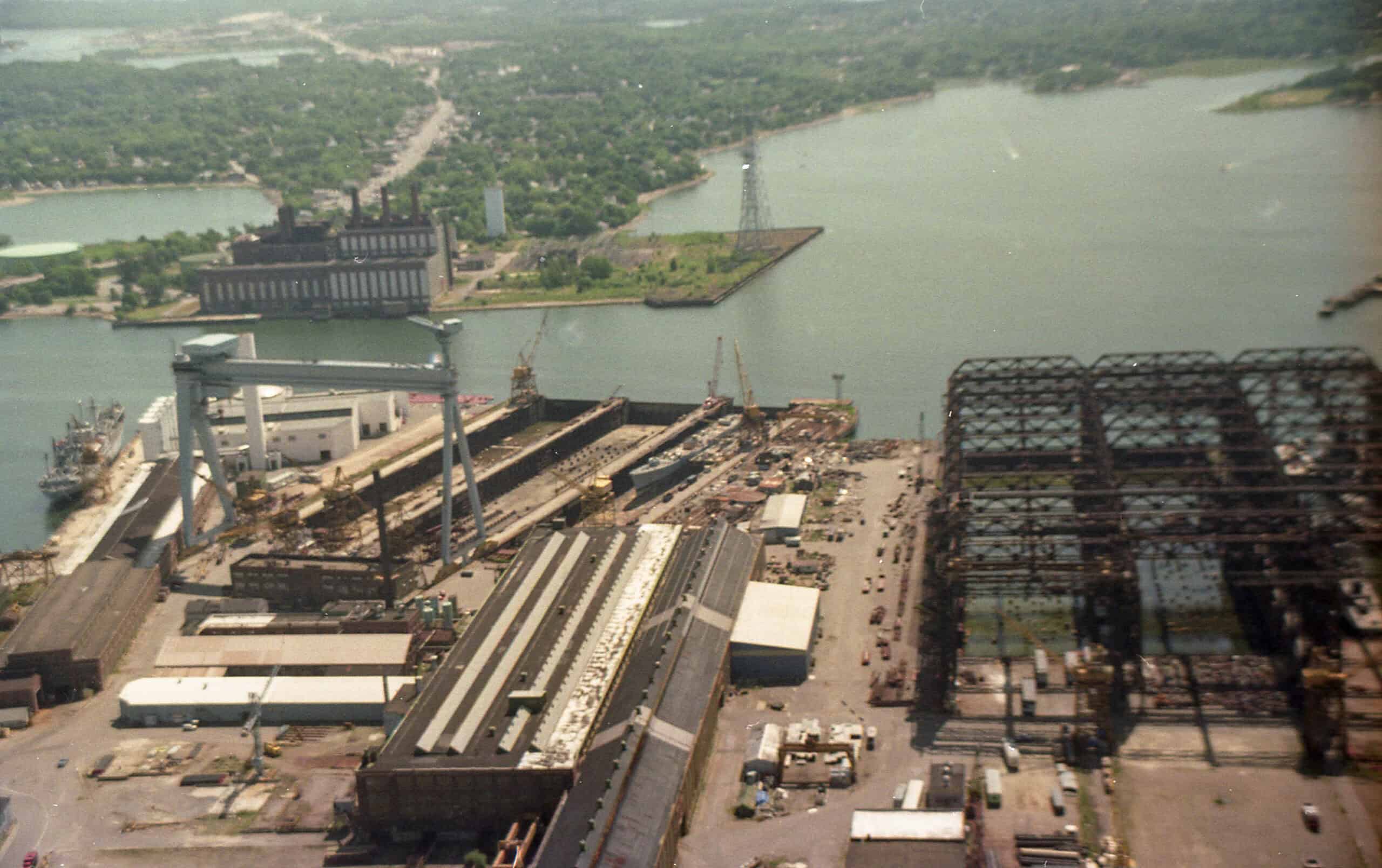
Fore River Shipyard operated as a subsidiary of General Dynamics for a number of years, but operations began in 1883. Fore River Shipyard constructed the first aircraft carrier for the U.S. Navy, the USS Lexington (CV-2). The shipyard would go on to build submarines, battleships, and aircraft carriers for the Navy eventually going defunct in the 1980s.
General Dynamics
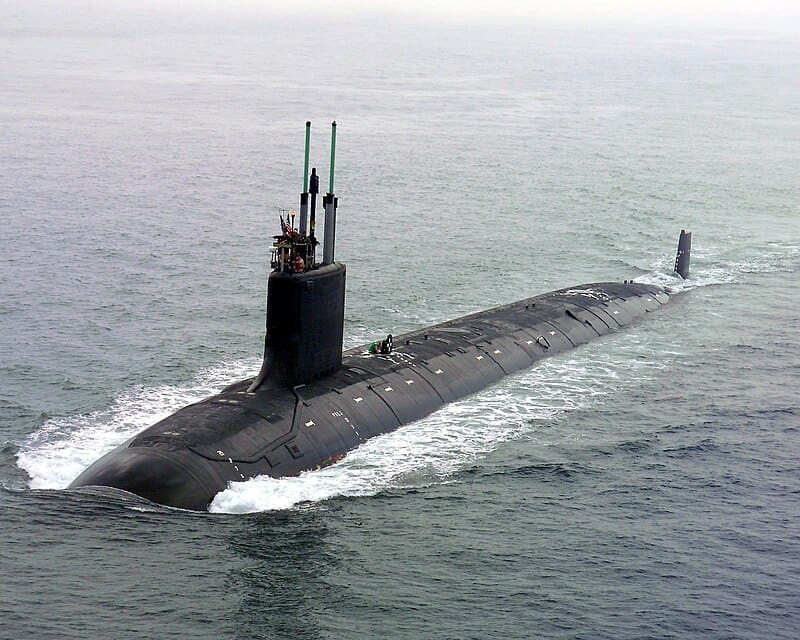
- Year founded: 1899
- Notable ships: USS Virginia (SSN-774), USS Miami (SSN-755), USS Ohio (SSGN-726/SSBN-726)
General Dynamics Continued

General Dynamics is one of the largest defense contractors in the United States, manufacturing weapons, vehicles, and vessels for every branch of the U.S. military. For the U.S. Navy, it primarily manufactures electronics systems, but it also has a partnership with Huntington Ingalls to produce the new Virginia-class of nuclear submarines.
Huntington Ingalls
- Year founded: 2011
- Notable ships: USS Delaware (SSN-791), USS California (SSN-781), USS Gerald R. Ford (CVN-78)
Huntington Ingalls Continued
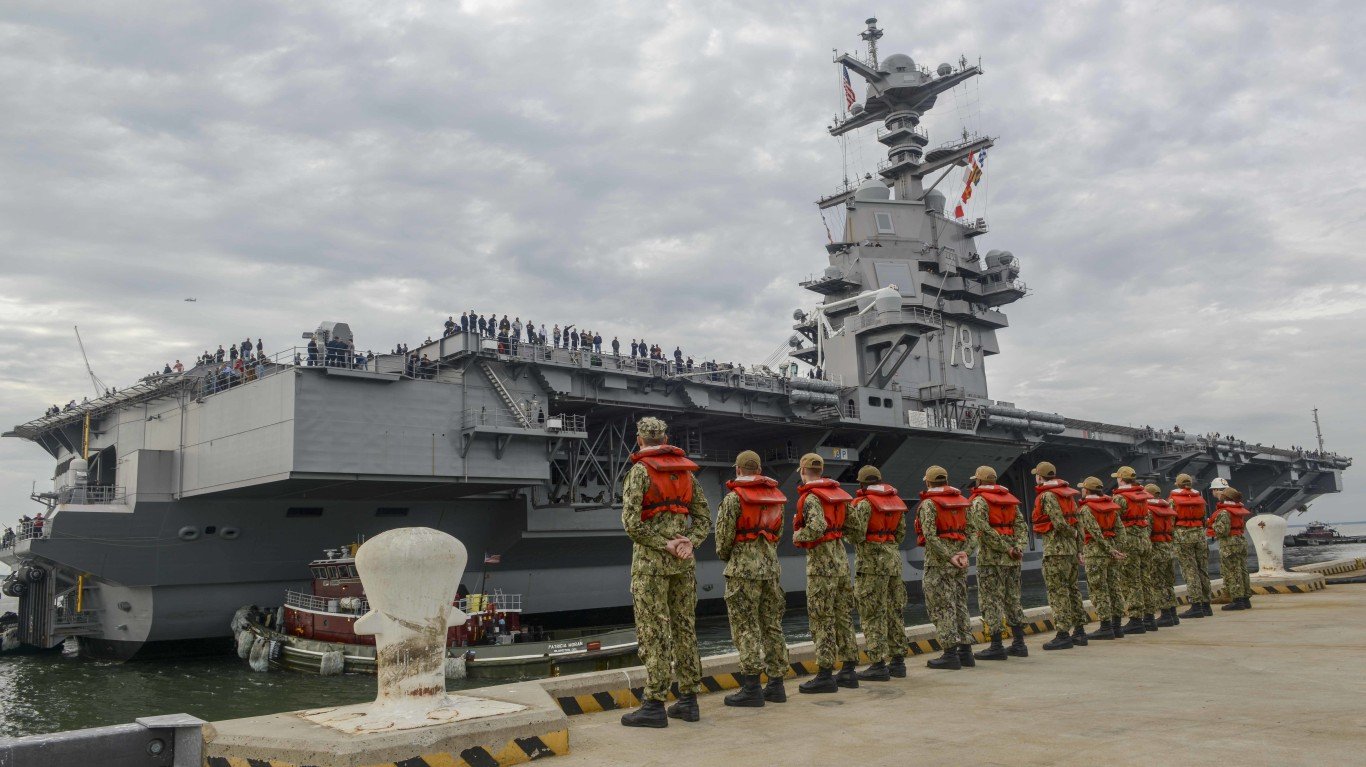
Out of all the military shipbuilders mentioned, Huntington Ingalls is the largest despite only being spun off in 2011. Its subsidiaries include Ingalls Shipbuilding and Newport News, both of which were founded decades before this modern company was created. Huntington Ingalls primarily oversees the production of the new Ford-class aircraft carriers and the Virginia-class nuclear submarines.
Marinette Marine
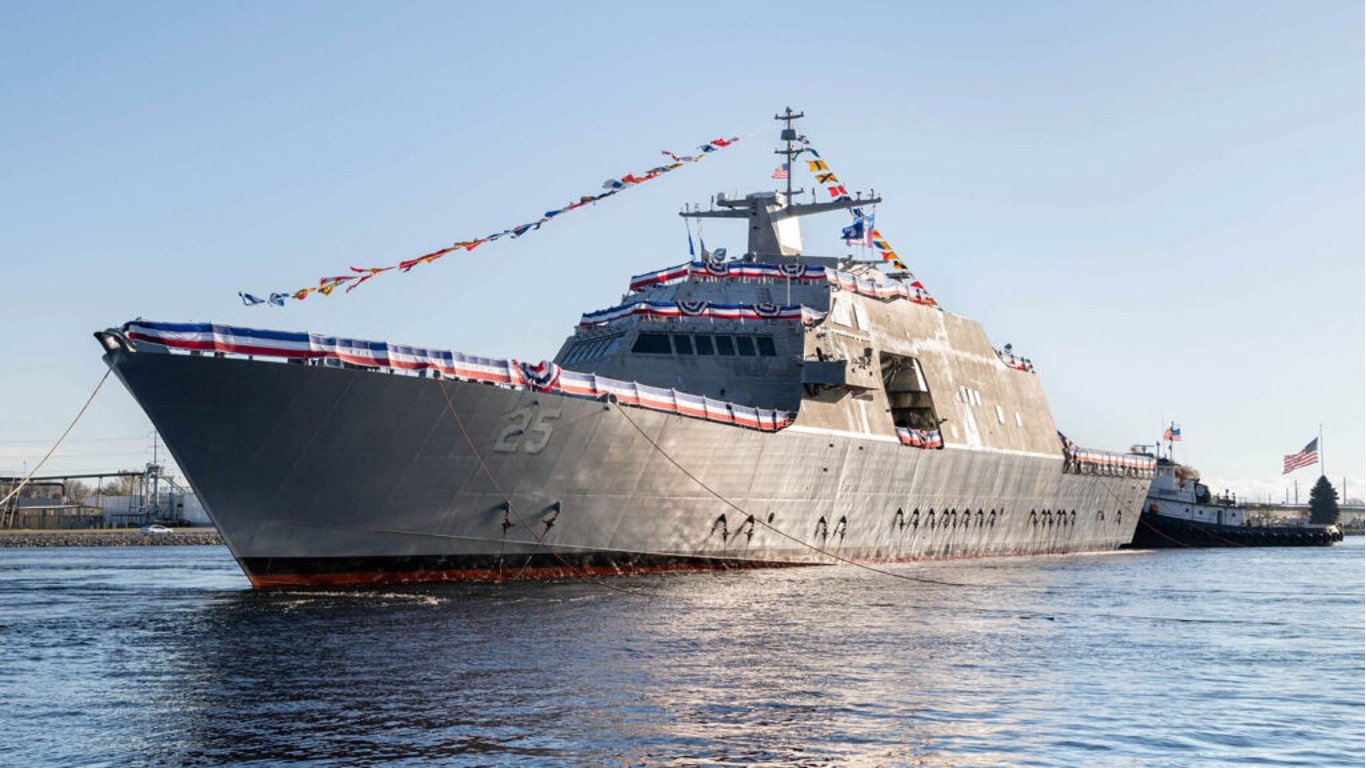
- Year founded: 1942
- Notable ships: USS Constellation (FFG-62), USS Milwaukee (LCS-5), USS Indianapolis (LCS-17)
Marinette Marine Continued

American shipbuilding company Marinette Marine was sold to Italian-based Fincantieri and now goes by Fincantieri Marinette Marine. The shipyard was founded in 1942 during the Second World War and has since produced over 1,300 vessels for both commercial and military use. The company is well known for producing the Freedom-class of littoral combat ships used by the U.S. Navy.
Newport News
- Year founded: 1886
- Notable ships: USS Los Angeles (SSN-688), USS Nimitz (CVN-68), USS Ranger (CV-61)
Newport News Continued
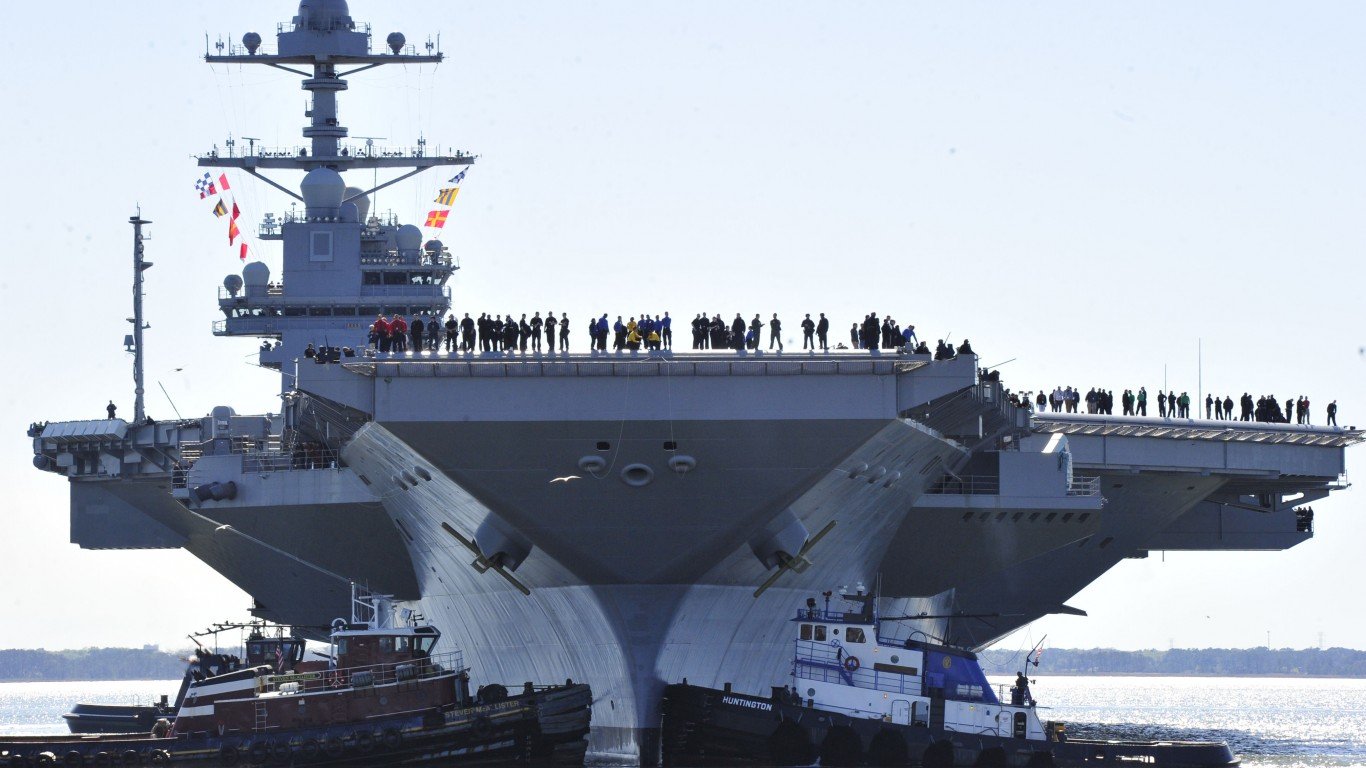
Newport News Shipbuilding is currently a subsidiary of Huntington Ingalls, but it was originally founded in 1886. Over the course of its life, Newport News has built over 800 ships both for the U.S. Navy and commercial interests. The shipyard is currently building the next generation of Ford-class aircraft carriers — John F. Kennedy and Enterprise. Newport News also provides valuable services for operational aircraft carriers such as refueling, repair, and modernization.
North Carolina Shipbuilding
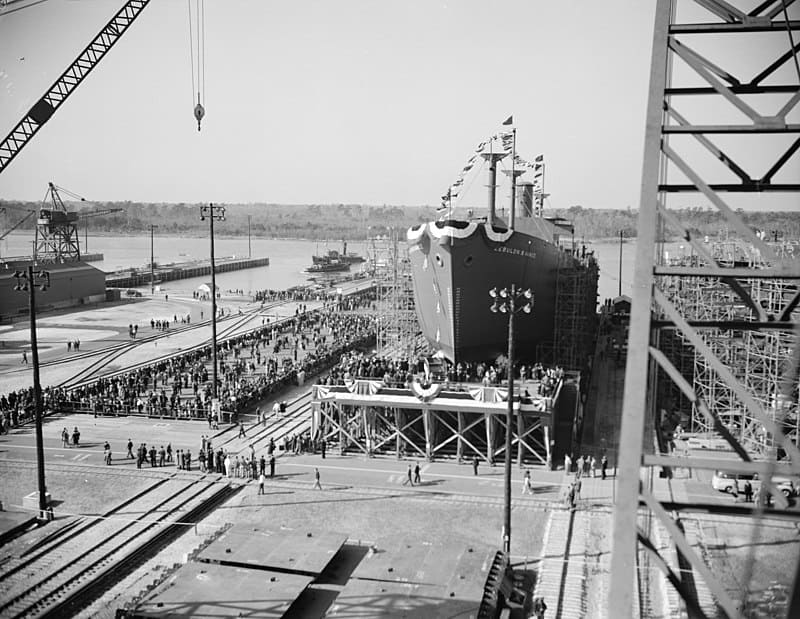
- Year founded: 1941
- Notable ships: USS Taconic (AGC-17/LCC-17), USS Mount McKinley (AGC-7/LCC-7), USS Adirondack (AGC-15)
North Carolina Shipbuilding Continued
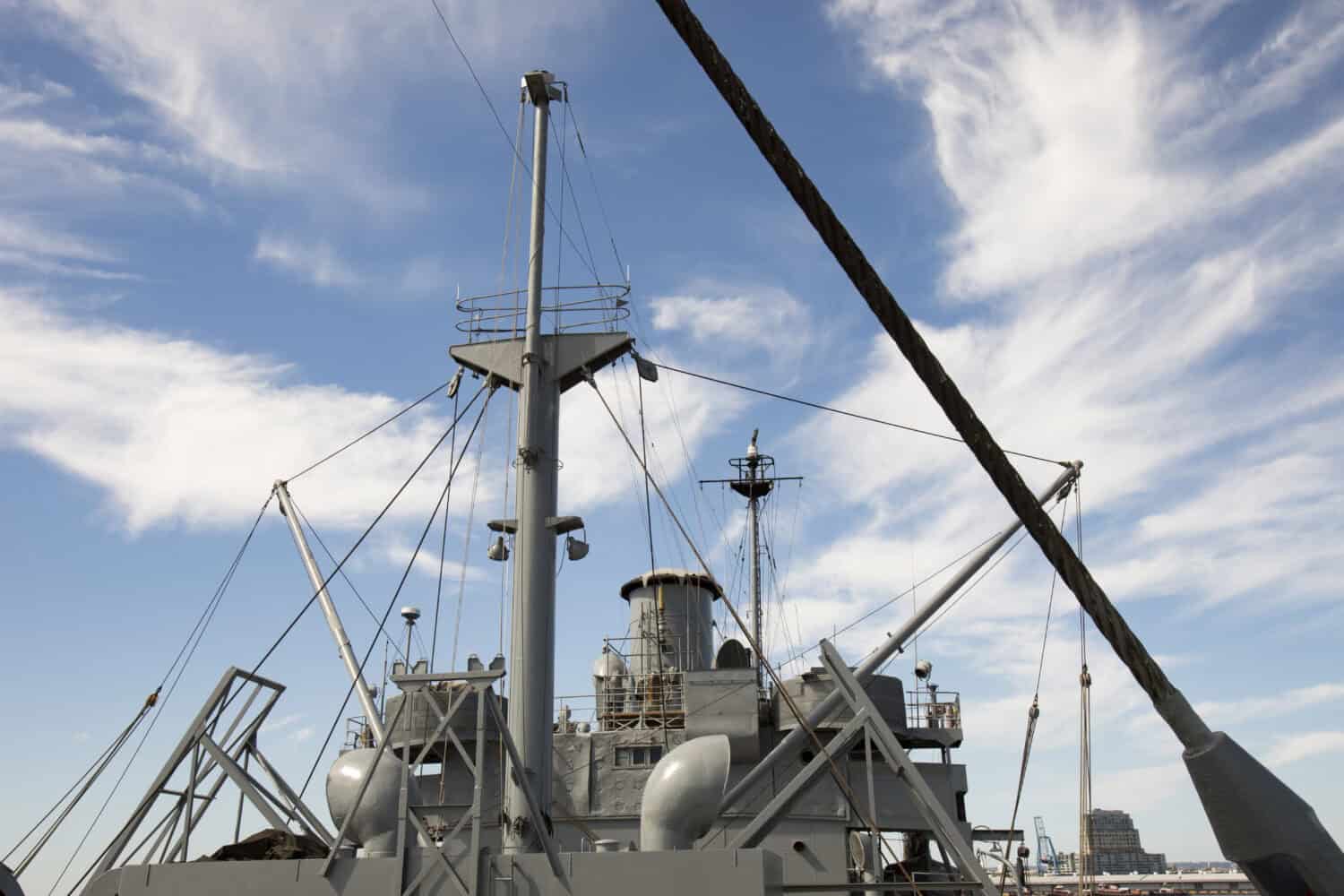
North Carolina Shipbuilding was founded in 1941 and closed not soon after, in 1946. Although the company only existed for about five years, it built 243 ships in total, 54 of them for the U.S. Navy. Also during those years, the shipyard employed up to 21,000 workers. Most of the ships being produced at North Carolina Shipbuilding were attack cargo ships or amphibious force flagships.
Northrop Grumman Ship Systems
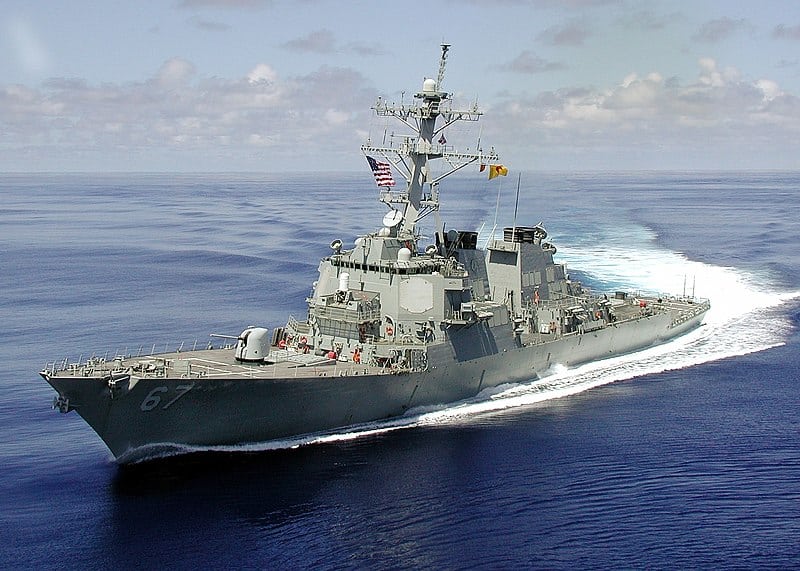
- Year founded: 1994
- Notable ships: USS New York (LPD-21), USS Cole (DDG-67), USS Preble (DDG-88)
Northrop Grumman Ship Systems Continued
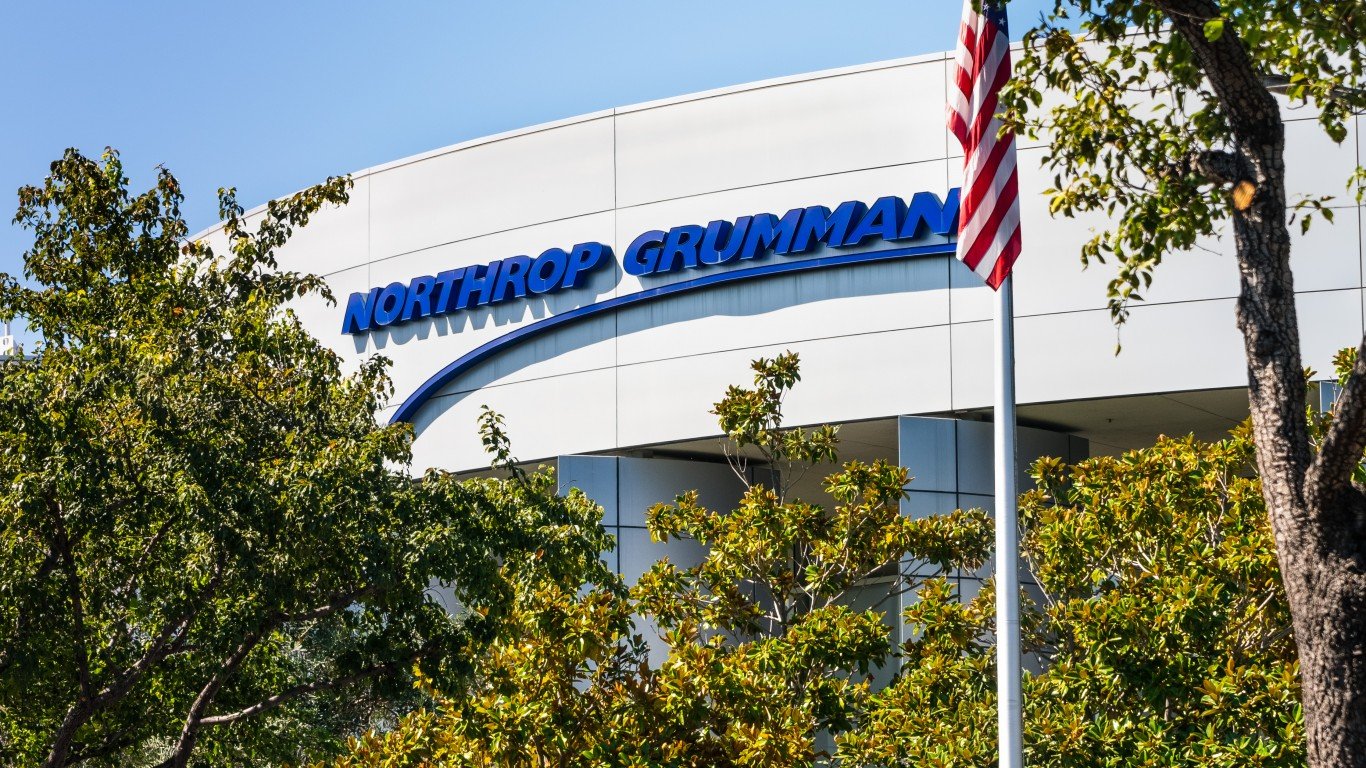
Northrop Grumman is by far one of the largest companies in the military industrial complex, typically known for its aircraft. However, Northrop Grumman manufactured naval vessels under many of its subsidiaries that it has acquired over the years. Northrop Grumman Ship Systems is one such acquisition, although it, along with other subsidiaries, was eventually spun off into a new company, Huntington Ingalls Industries.
Philadelphia Naval Shipyard
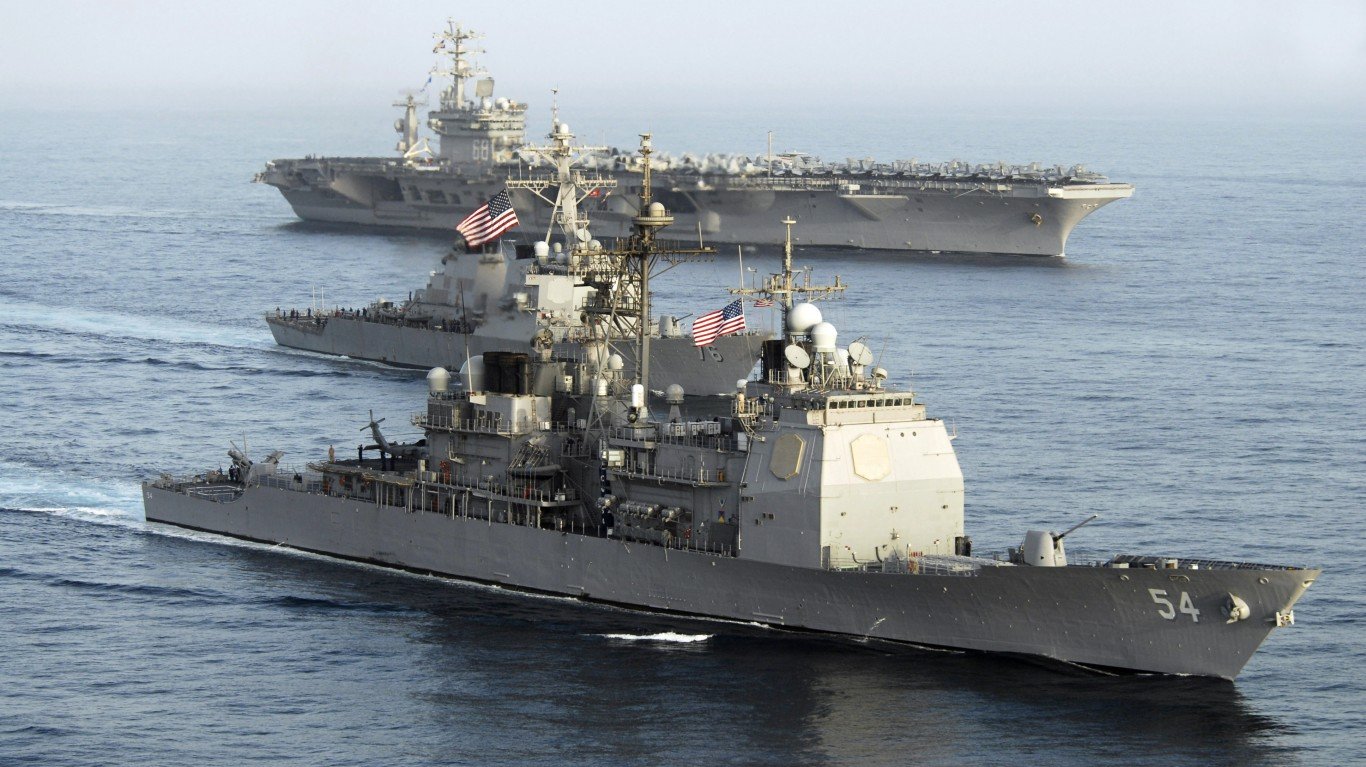
- Year founded: 1801
- Notable ships: USS Antietam (CV/CVA/CVS-36), USS Philadelphia (CL-41), USS Wisconsin (BB-64)
Philadelphia Naval Shipyard Continued
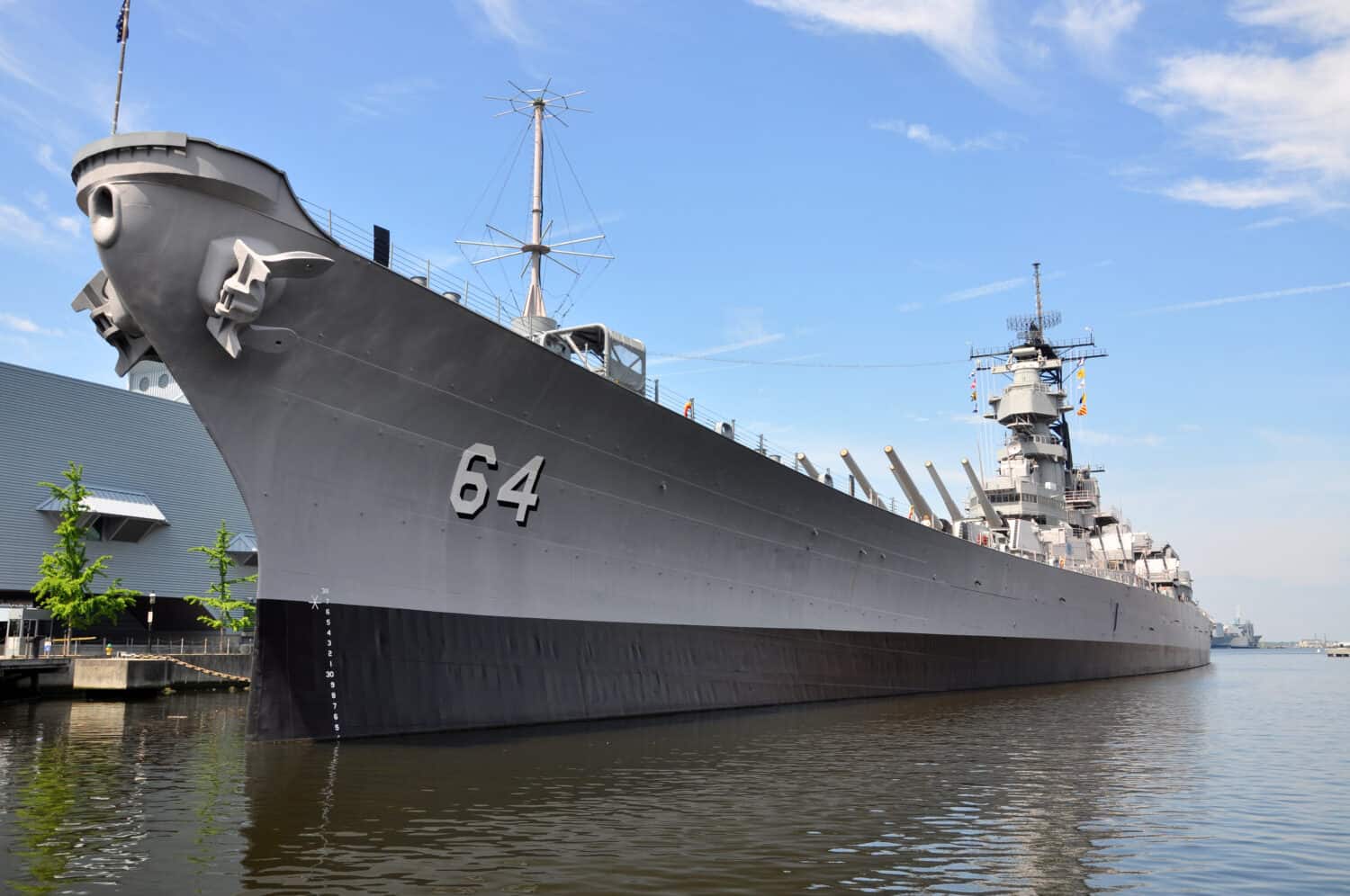
Philadelphia Naval Shipyard was founded in 1801, but it has its roots in the American Revolution. Perhaps the greatest period for this shipyard was during World War II, when it employed over 40,000 workers to construct and repair ships. The USS Blue Ridge (LCC-19) was the last U.S. Navy vessel built at the shipyard in 1970.
Portsmouth Naval Shipyard
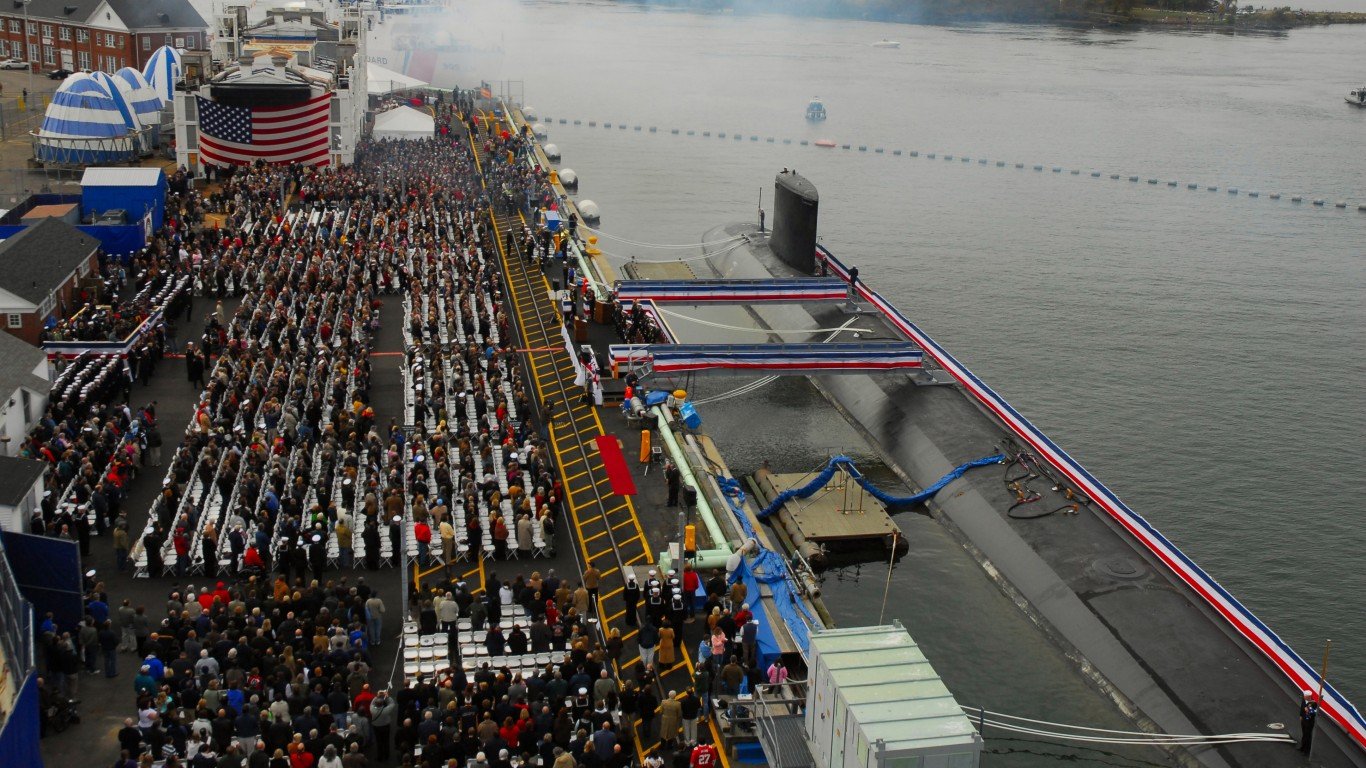
- Year founded: 1800
- Notable ships: USS Narwhal (SS-167), USS Balao (SS/AGSS-285), USS Abraham Lincoln SSBN-602)
Portsmouth Naval Shipyard Continued
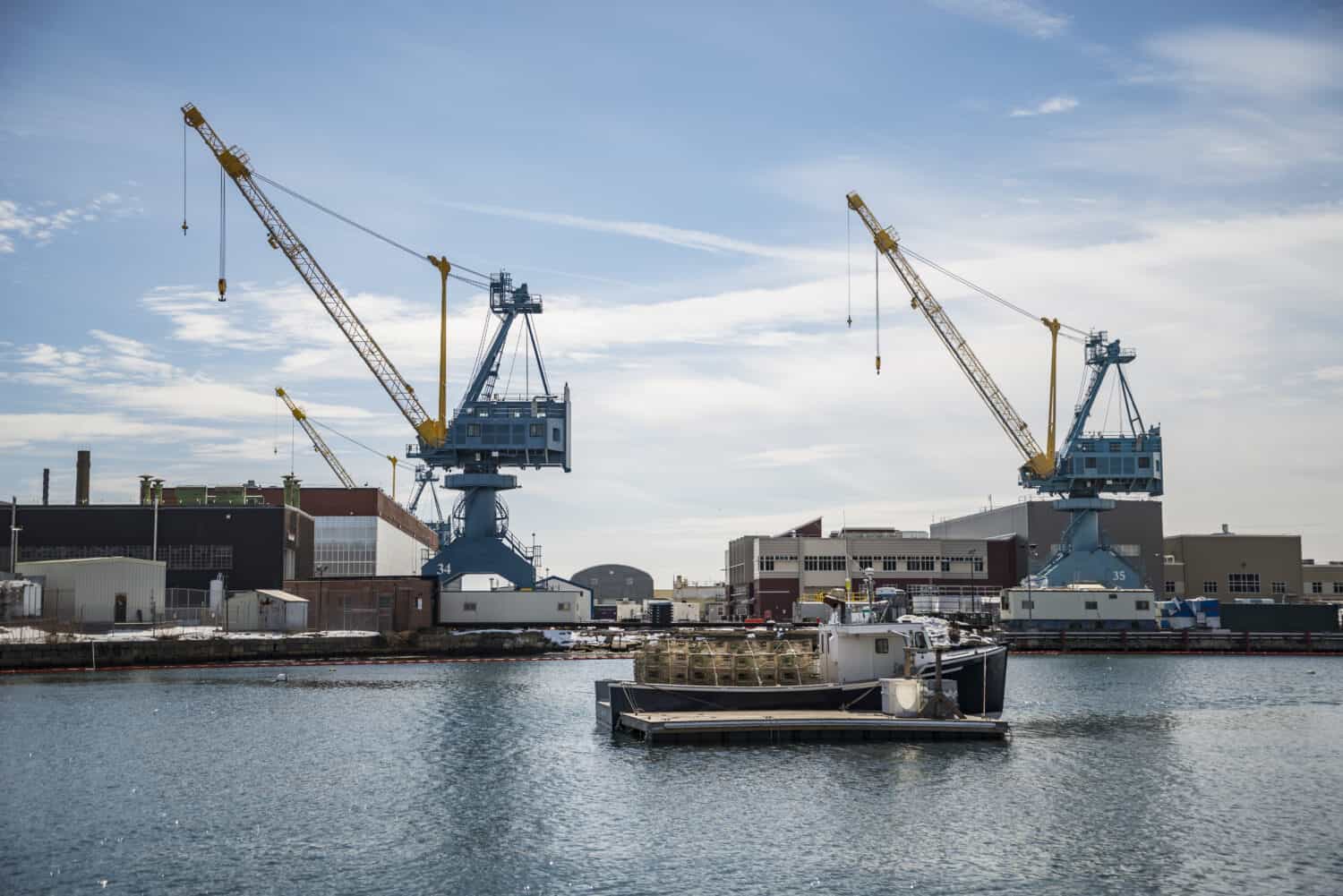
Founded in 1800 and located at the southernmost tip of Maine, Portsmouth Naval Shipyard is known as the U.S. Navy’s oldest continuously operating shipyard that is still in operation today. Portsmouth Naval shipyard employs over 6,500 workers who primarily focus on the overhaul, repair, and modernization of submarines.
Puget Sound Naval Shipyard
- Year founded: 1891
- Notable ships: USS Astoria (CL/CA-34), USS Monssen (DD-346), USS Sculpin (SSN-590),
Puget Sound Naval Shipyard
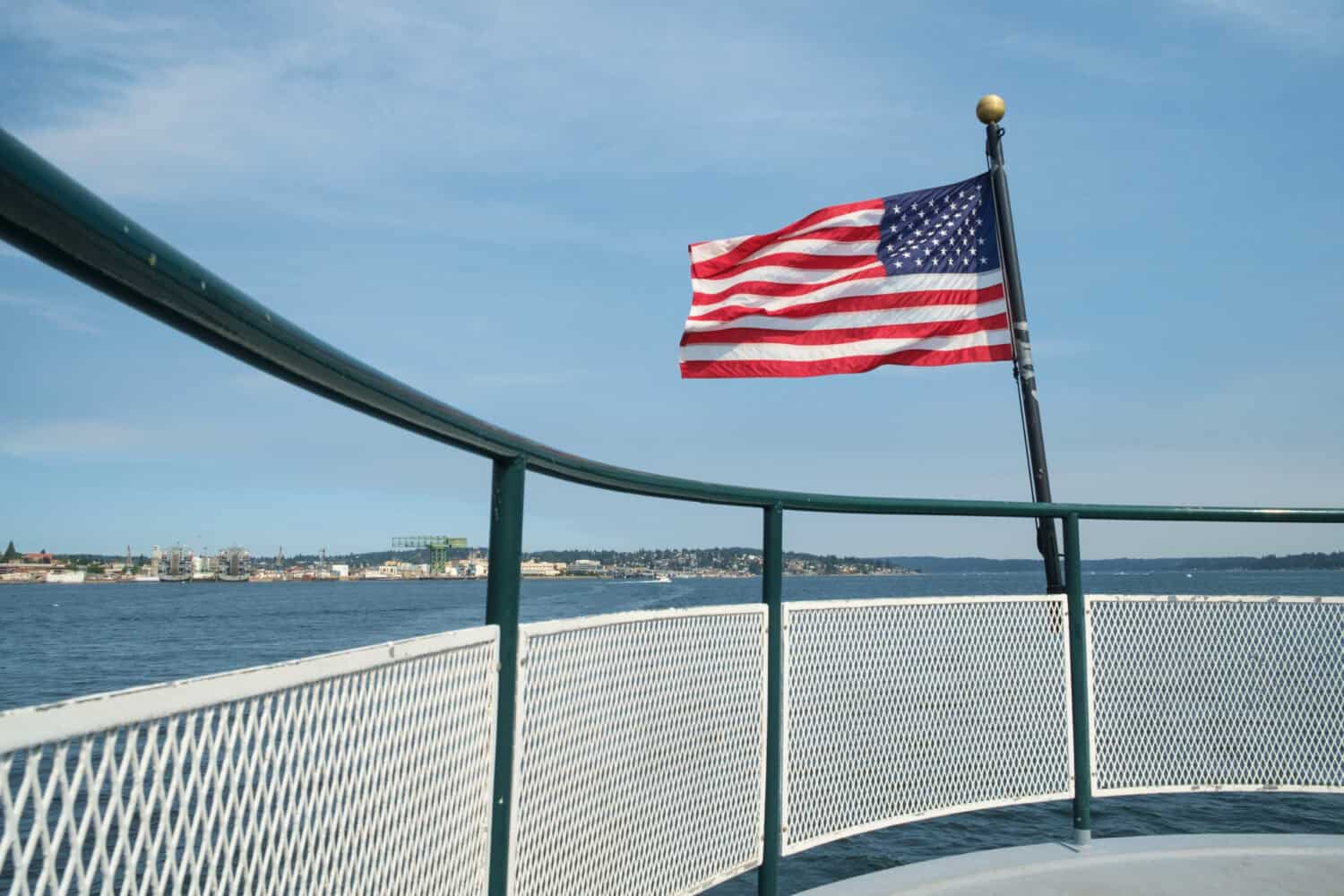
Puget Sound Naval Shipyard is the largest naval shore facility located in the Pacific Northwest. It also acts as a shipyard. The facility is under the control of the U.S. Navy and has been in its service for more than a century now . During World War I, Puget Sound produced submarines, submarine-chasers, minesweepers, and a series of other small boats. However, for the Second World War, this shipyard primarily repaired damaged ships. In the following years, the shipyard would upgrade aircraft carriers and build a new class of guided missile frigate.
Todd-Pacific Shipbuilders

- Year founded: 1917
- Notable ships: USS Ingraham (FFG-61), USS Ajax (AR-6), USS Vulcan (AR-5)
Todd-Pacific Shipyards Continued
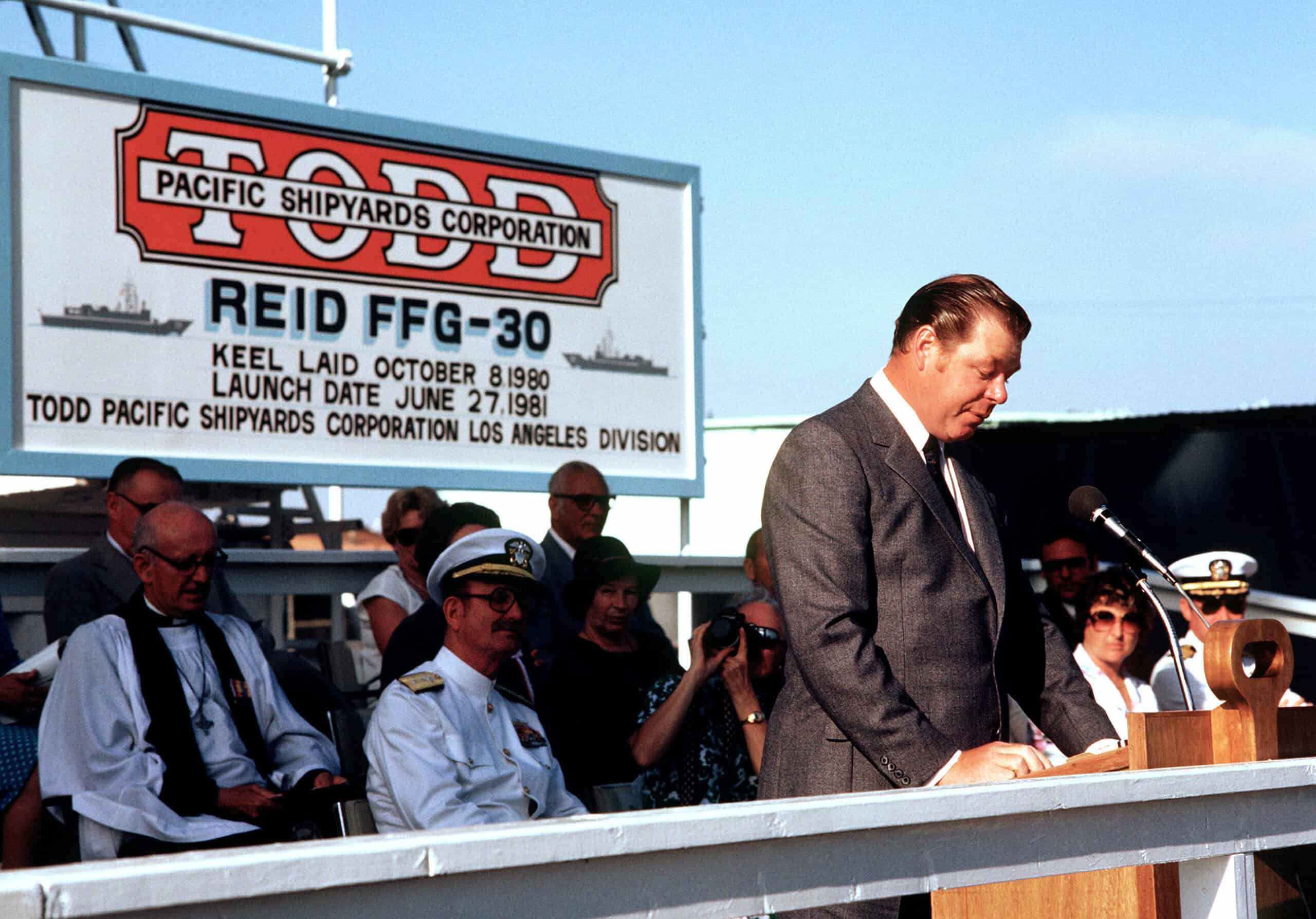
Todd-Pacific Shipyards was founded in Los Angeles towards the end of the First World War. The company has gone under a few different names over the years, ultimately going defunct in 1989 after not being able to secure a contract for any of the U.S. Navy’s new Arleigh Burke-class destroyers. The shipyard manufactured over 130 ships over the course of its life.
Union Iron Works
- Year founded: 1849
- Notable ships: USS Oregon (BB-3), USS Wisconsin (BB-9), USS Oakland (CL-95)
Union Iron Works Continued
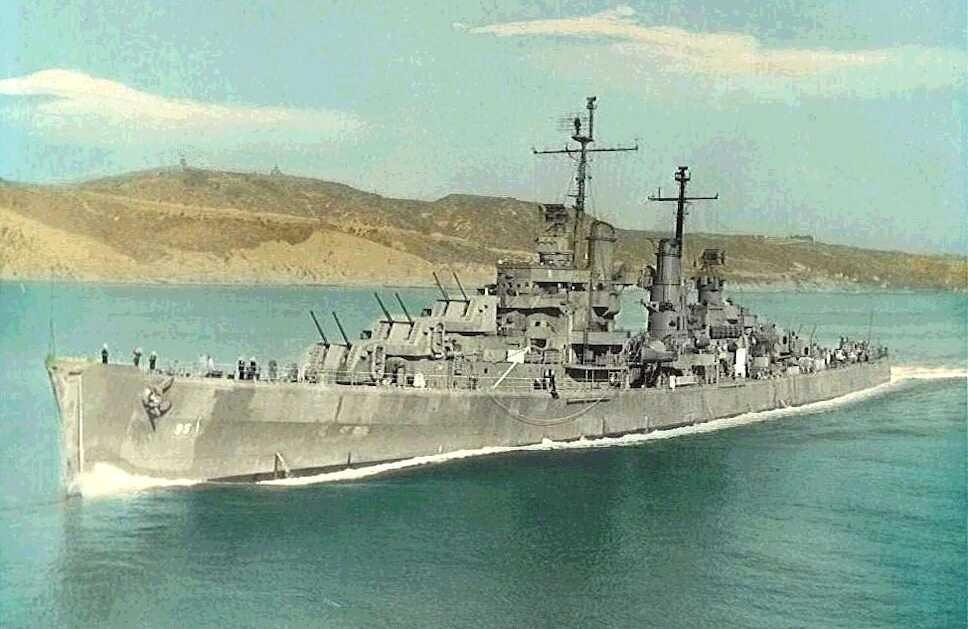
Union Iron Works was founded in San Francisco halfway through the 19th century. The company was primarily focused on railroads but turned to steel-hulled ships towards the end of the century. Union Iron Works would go on to build a number of submarines for World War II as well as a number of different classes of destroyers.
William Cramp & Sons
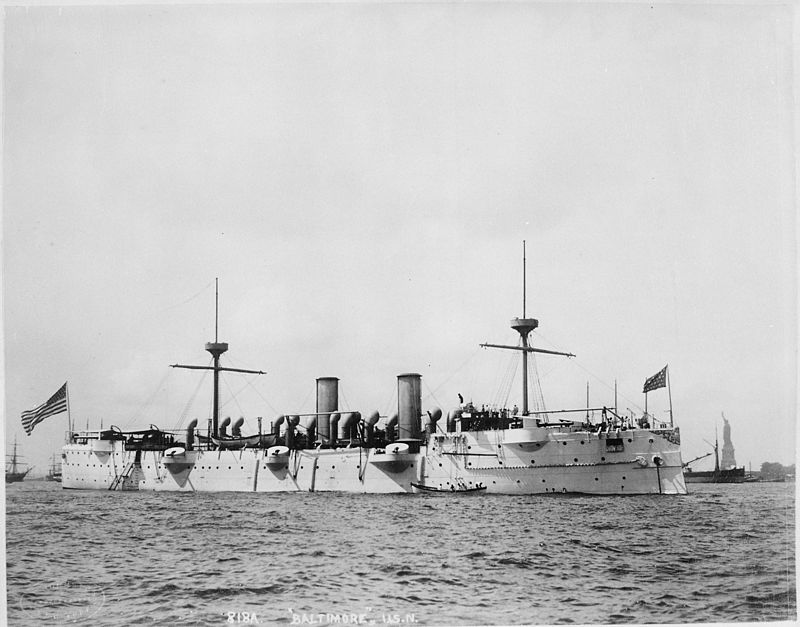
- Year founded: 1830
- Notable ships: USS Baltimore (C-3), USS New York (ACR-2/CA-2), USS Indiana (BB-1)
William Cramp & Sons Continued
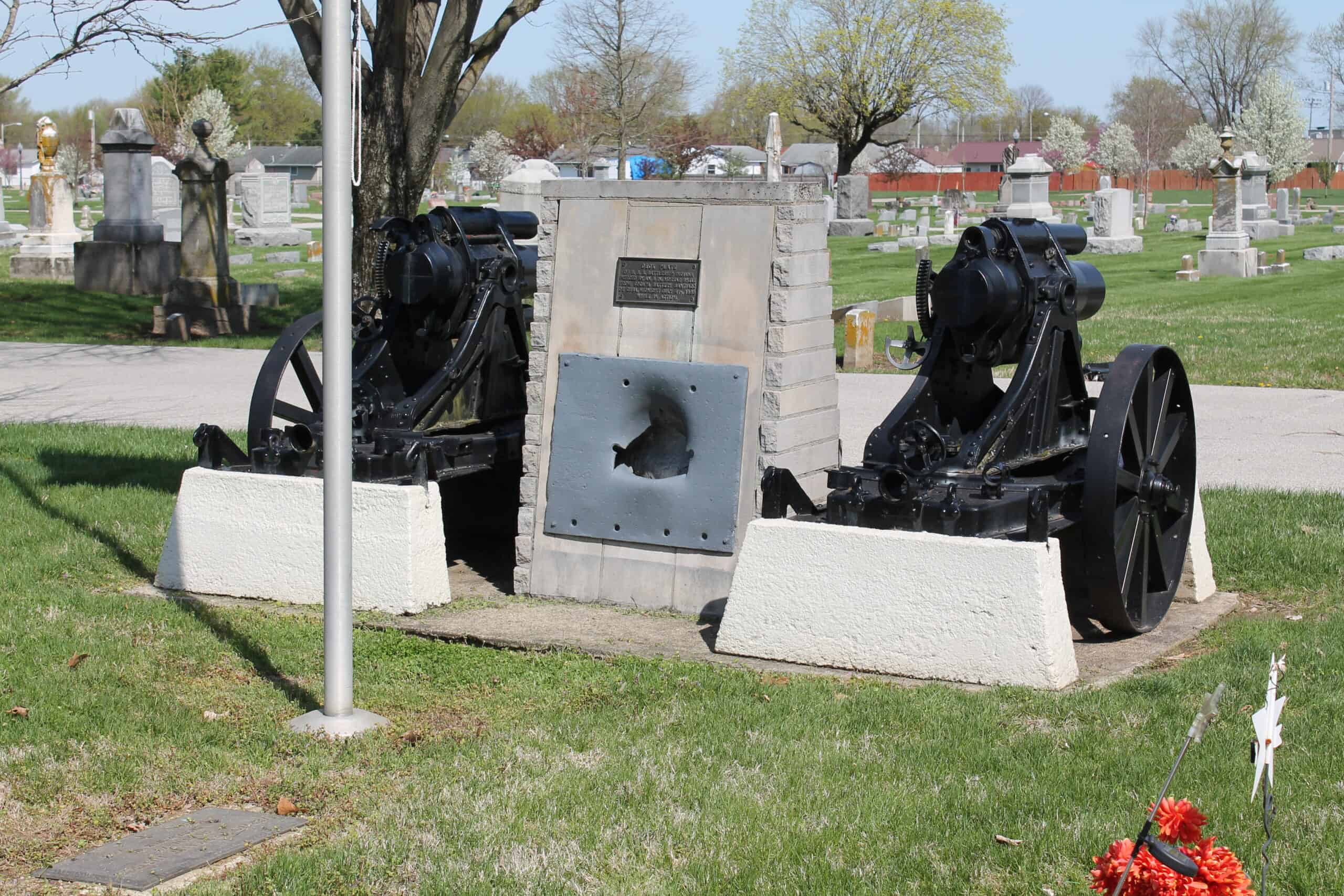
William Cramp & Sons was founded in the early 19th century, but most of its notable ships were built much later in the century. The American Shipping and Commercial Corporation bought the shipyard post-World War I but closed it in less than a decade. The company would reopen as Cramp Shipbuilding in 1940 to build cruisers and submarines for the war effort. However, the company was not successful in its operations and closed for good in 1947.
Thank you for reading! Have some feedback for us?
Contact the 24/7 Wall St. editorial team.
